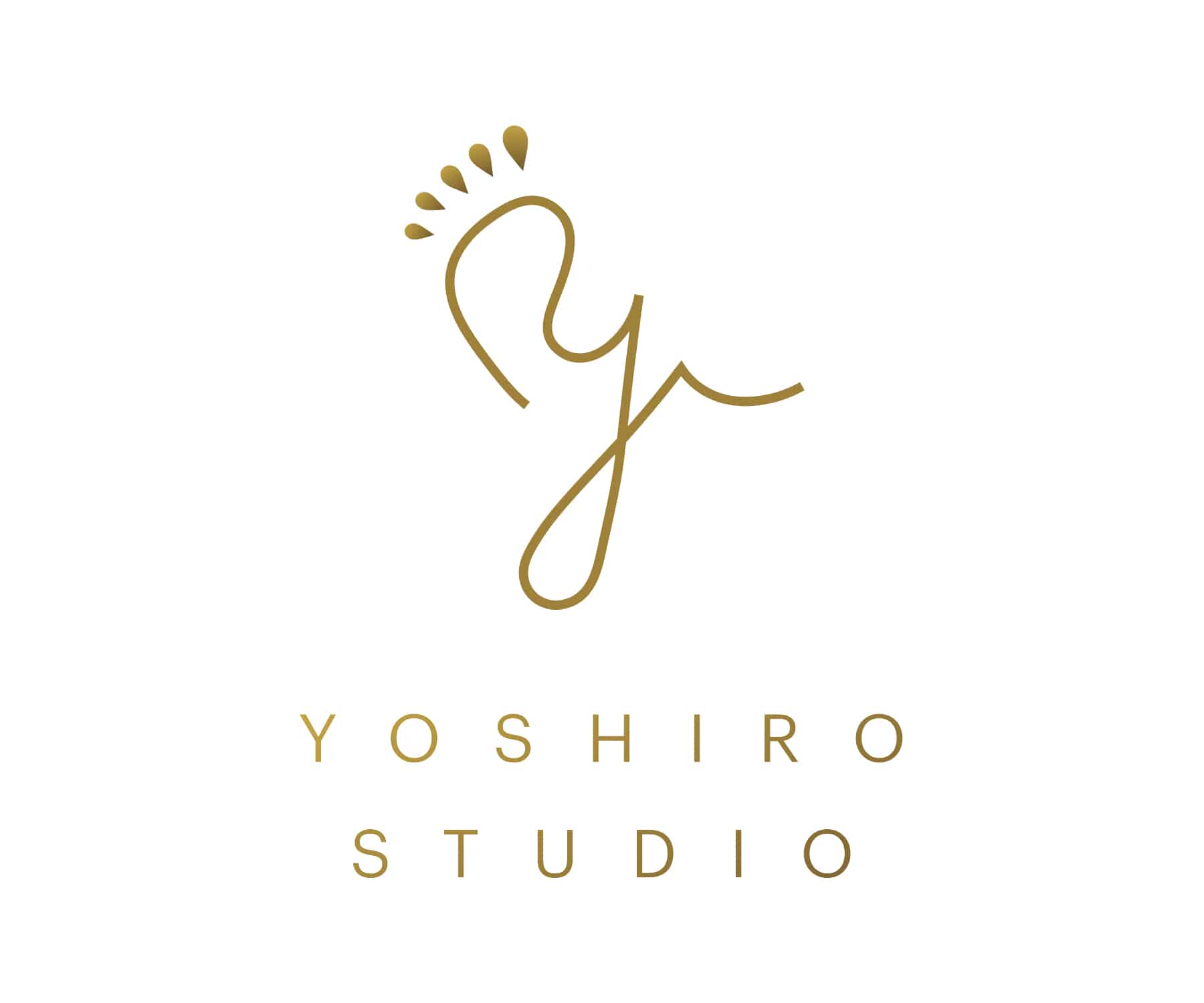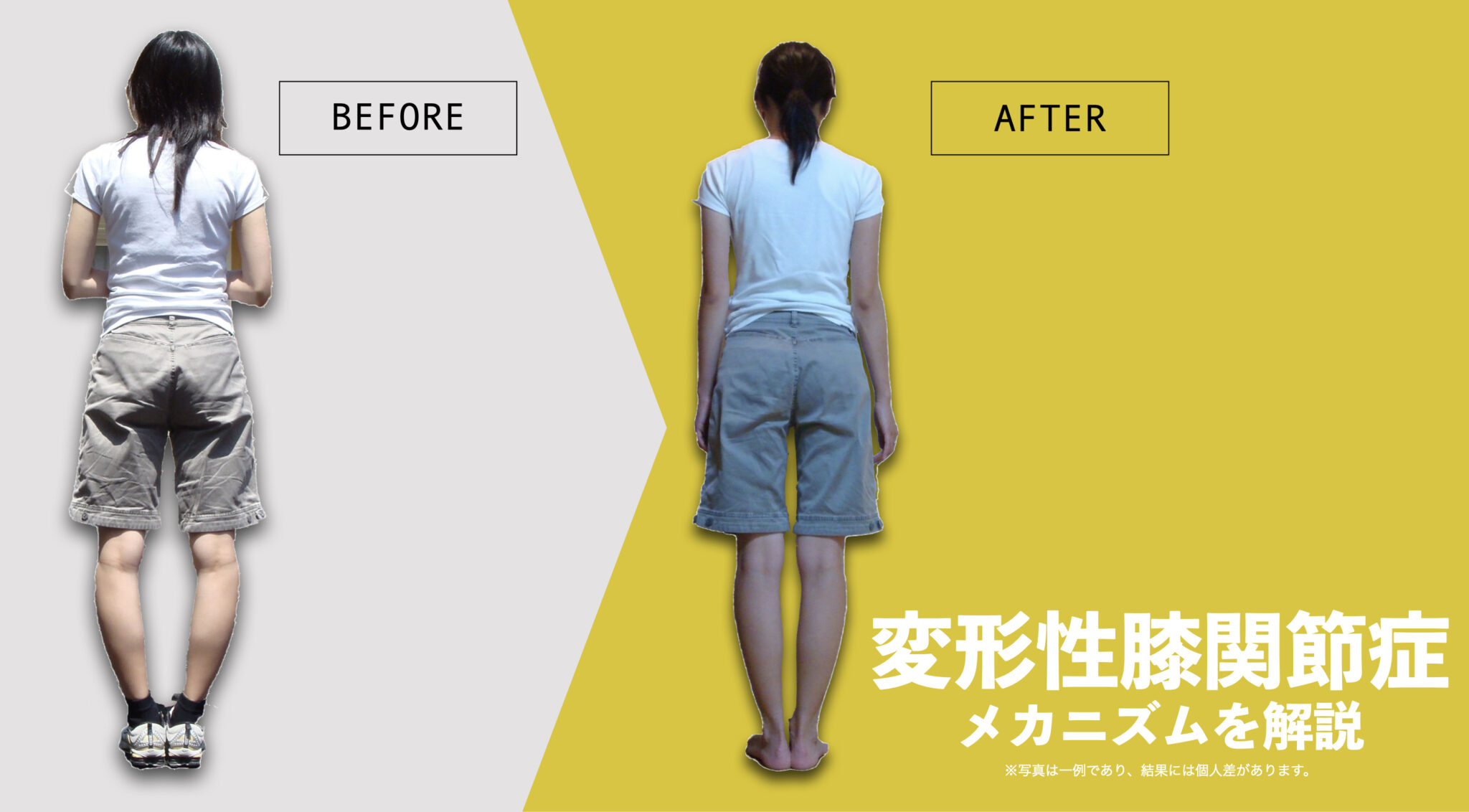はじめに|なぜ、膝だけ治療しても変わらないのか?
こんにちは。足指研究家の湯浅慶朗です。
私はこれまで 延べ10万人以上の足指・歩行・姿勢の分析 を行うなかで、次のような共通点をたびたび目にしてきました。
- 膝だけ治療しているのに、なぜか変わらない
- 注射を繰り返しても一時的でまた痛みが戻る
- 「軟骨がすり減った」と言われたが説明に納得できない
- O脚が年々進んでいく理由が分からない
多くの方が抱えている疑問に対し、私は臨床経験と研究論文を総合すると ひとつの答えにたどり着きます。
それは——
膝の痛みや変形の“発端”は、膝ではなく足指にある可能性が高い。
日本ではまだ一般化されていませんが、
国際的な研究を精査すると、膝関節の痛みや変形が “局所の問題だけではない” ことは明らかになっています。
本記事では、研究論文と私の臨床から分かった事実をもとに、
「足指 → 足部 → 下腿骨 → 膝関節」 という力学的連鎖を、
初心者にも理解できるように丁寧に整理します。
変形性膝関節症とは何か?——痛みの原因は“軟骨そのもの”ではない
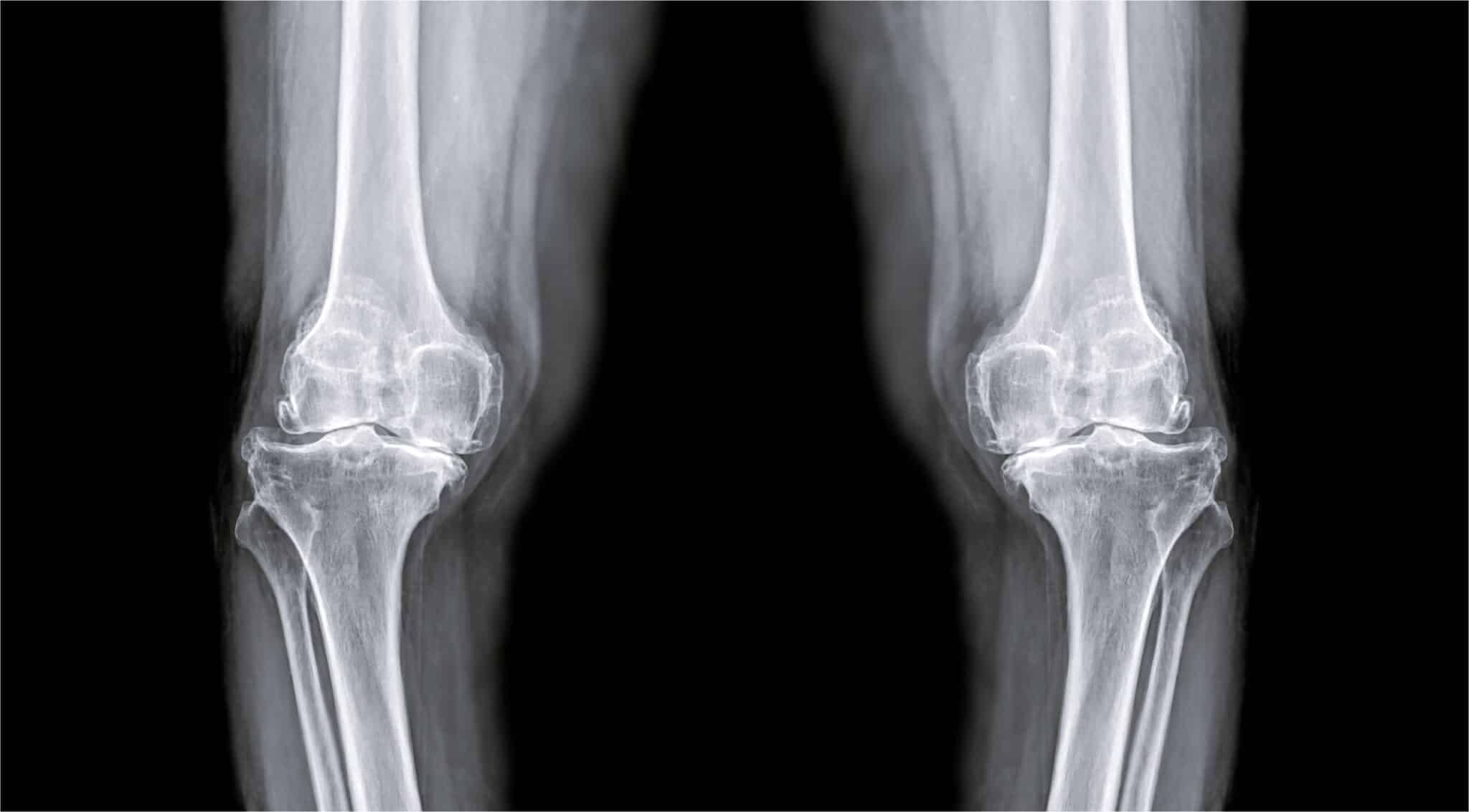
多くの方が「軟骨がすり減ったから膝が痛む」と説明されます。
しかし、これは膝OA(変形性膝関節症)の本質を正しく表していません。
なぜなら——
✔ 膝の軟骨には神経がほとんど存在しない
✔ すり減り=痛み では説明できない
✔ 痛みの発生源は“周囲組織の炎症”である
という事実が、研究からも臨床からも明らかだからです。
この項目では、最新の研究論文に基づいて、この事実を順番に解説していきます。
研究レビュー①
「MRI異常と痛みは一致しない:構造変化と症状が乖離する可能性」
2013年に KU Leuven University の Burt ら が行った研究では、87名の女性を対象に、膝関節のMRI所見と痛み・筋力・機能低下の関連を分析したところ、MRIで軟骨損傷や半月板損傷があっても痛みを訴えない人が多く、逆にMRIが正常でも強い痛みを訴える人がいるという結果が報告されています。
これは従来の
「軟骨がすり減ったから痛い」という説明は不十分
であることを示唆しています。
研究レビュー②
「痛みの有無に関係なく 89% に膝の構造異常が存在する:加齢変化と症状の乖離」
2012年に Guermazi ら が実施した研究では、50歳以上710名の膝にMRIを行い、膝OAと診断されていない人も含めて構造異常の有無を調査したところ、
・骨棘:74%
・軟骨損傷:69%
・骨髄病変:52%
など、全体の 89% にOA関連の異常が確認された と報告されています。
これは、
✔「異常=痛み」ではない
✔ 加齢変化はほぼ全員に起こる自然現象
であることを裏づけています。
研究レビュー③
「膝OAの進行は体重より“脚のアライメント”が影響する可能性」
2005年および2007年に Boston University の Brouwer ら が行った一連の研究では、394膝を30ヶ月追跡し、膝OAの進行とアライメント・BMIとの関連を分析した結果、膝の内反(O脚)と外反(X脚)といった“脚の並び(アライメント)”が進行リスクの中心であり、体重より強く影響する場合があることが報告されています。
特に、
- 中等度のO脚では体重の影響が顕著に増大しやすい傾向
- 重度のO脚では体重の影響は相対的に小さくなる
とされ、
2007年 Brouwer らの論文では、内反アライメント(O脚)はOA進行リスクを約2.9倍に高める(OR 2.90, 95%CI 1.07–7.88)ことが示されています。
これらの結果は、膝OAの進行において 軸(alignment)が決定因子になり得る ことを示唆しています。
研究レビュー④
「大腿四頭筋の筋力低下だけでは膝OAの痛みを説明できない可能性」
2022年に Zuha ら が実施した横断研究では、196名を対象に大腿四頭筋の筋力と膝OA症状との関連を分析した結果、筋力と痛みの関連は統計学的に有意ではない(p=0.097)ことが報告されています。
この研究は、膝OAの痛みや機能低下が
筋力低下だけで説明できるものではなく、
✔ アライメント
✔ 炎症
✔ 神経的要因
✔ メカニカルストレス
など複数の因子が関与する可能性を示唆しています。
研究レビューから導かれる“ひとつの事実”
ここまでの研究を総合すると、明確な結論があります。
【結論】膝OAの真の原因は“膝の中”ではなく “膝の外側の構造” にある
- 画像異常=痛みではない
- 軟骨は痛みを発しない
- 痛みは周囲組織の炎症
- 炎症は “偏った力の集中” で生じる
- 力の偏りは “アライメント異常” が作る
- アライメント異常は 足部→下腿骨→膝 の連鎖から始まる
この“構造の因果”を無視して膝だけ治療しても変化しにくいのは当然です。
アライメント(alignment)とは、関節や骨の整列状態を指す言葉です。特に膝関節においては、大腿骨(太ももの骨)と脛骨(すねの骨)の位置関係を表し、「膝の軸のズレ」を意味します。

では、その連鎖の“出発点”とは?
膝OAはどこから始まるのか?——すべては「足指の機能不全」から動き出す
研究レビューでも示したとおり、
膝OAは「膝だけの問題」として説明するのは非常に難しい症状です。
なぜなら、膝の軟骨そのものが痛みの原因ではなく、
痛みの背景には “力の偏り=メカニカルストレス” が存在するからです。
そして、このストレスを生む起点こそが、
✔ 足指の変形(浮き指・屈み指・内反小趾)
なのです。
メカニズム①|下腿骨は足部の影響で“必ず傾く”——膝OAの隠れた出発点
膝関節は、
下腿骨(脛骨)・大腿骨・膝蓋骨の3つで構成されています。
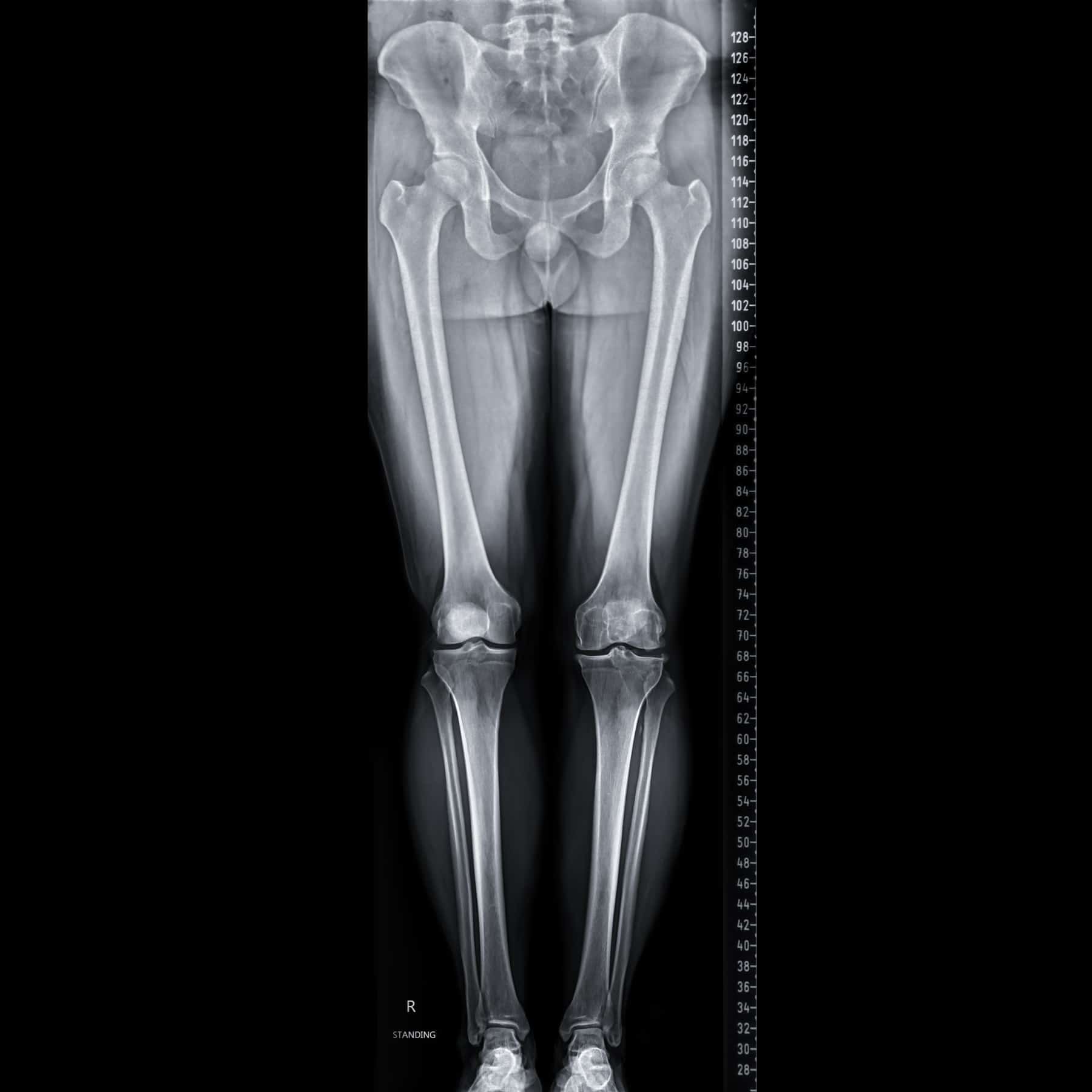
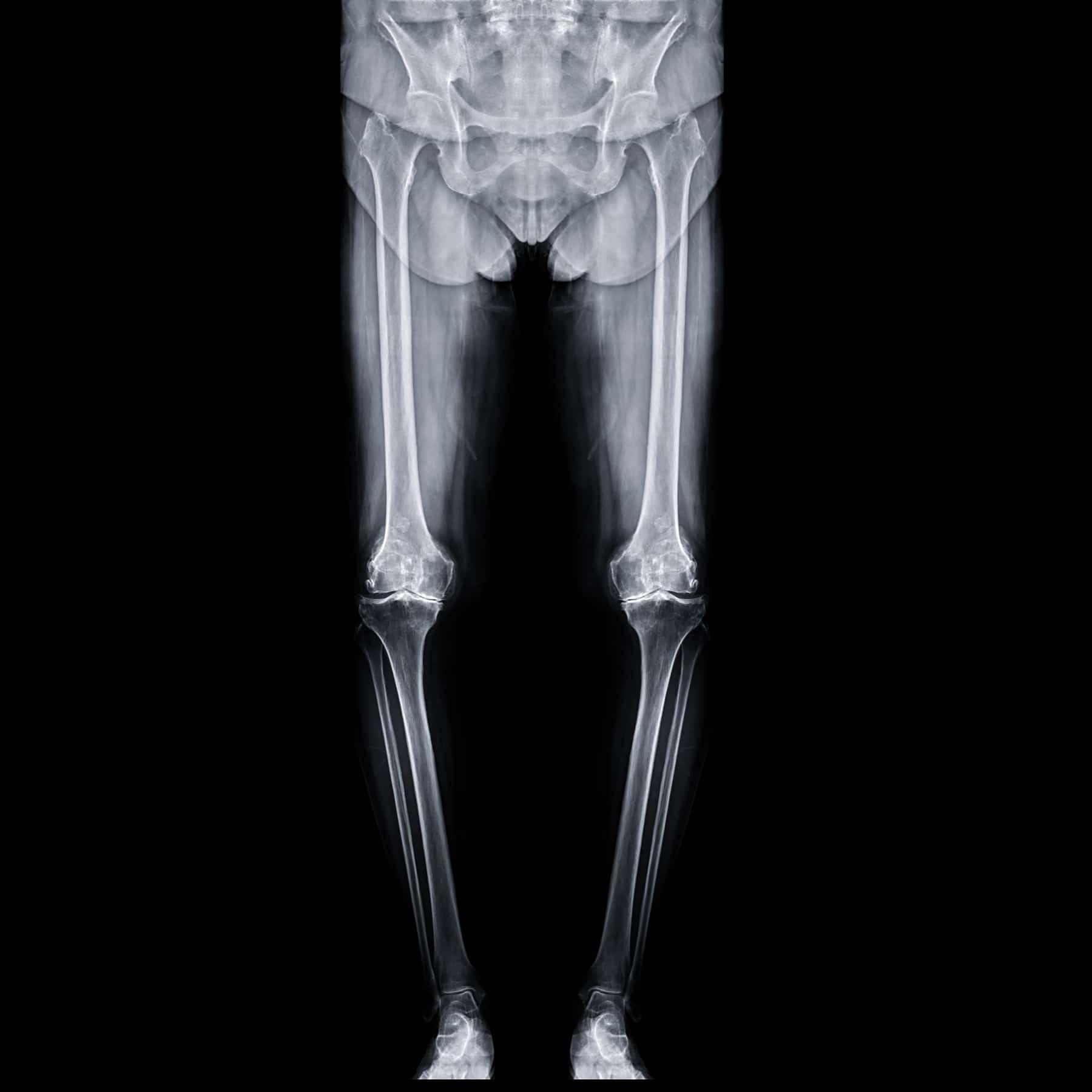
そのうち 下腿骨(脛骨)は“上に乗っているだけ” の構造であり、
- 足元が傾く
- 踵が倒れる
- 足指の支えが消える
といった変化が起こると、
👉 下腿骨はそのまま連動して外側 or 内側へ傾く
という特性があります。
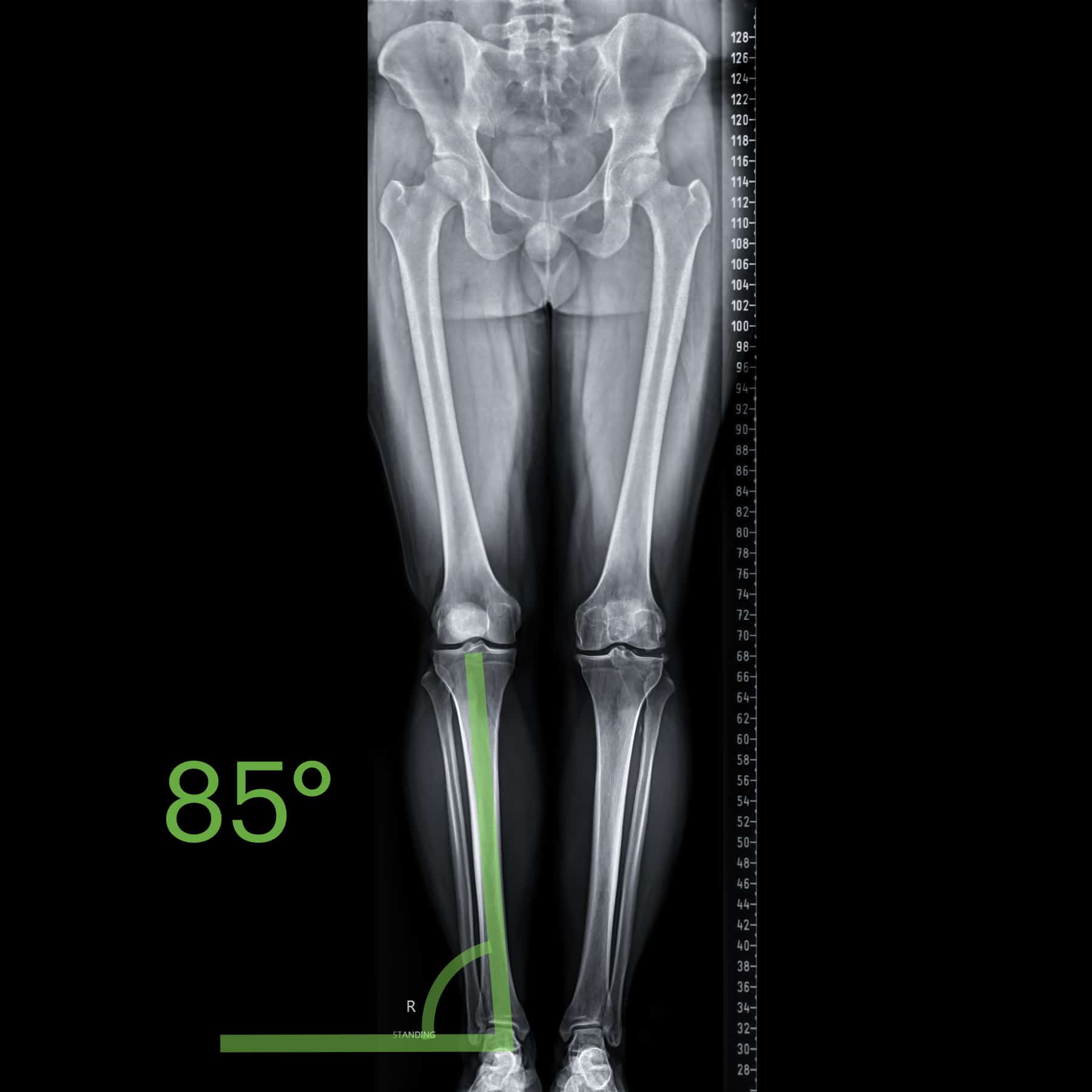
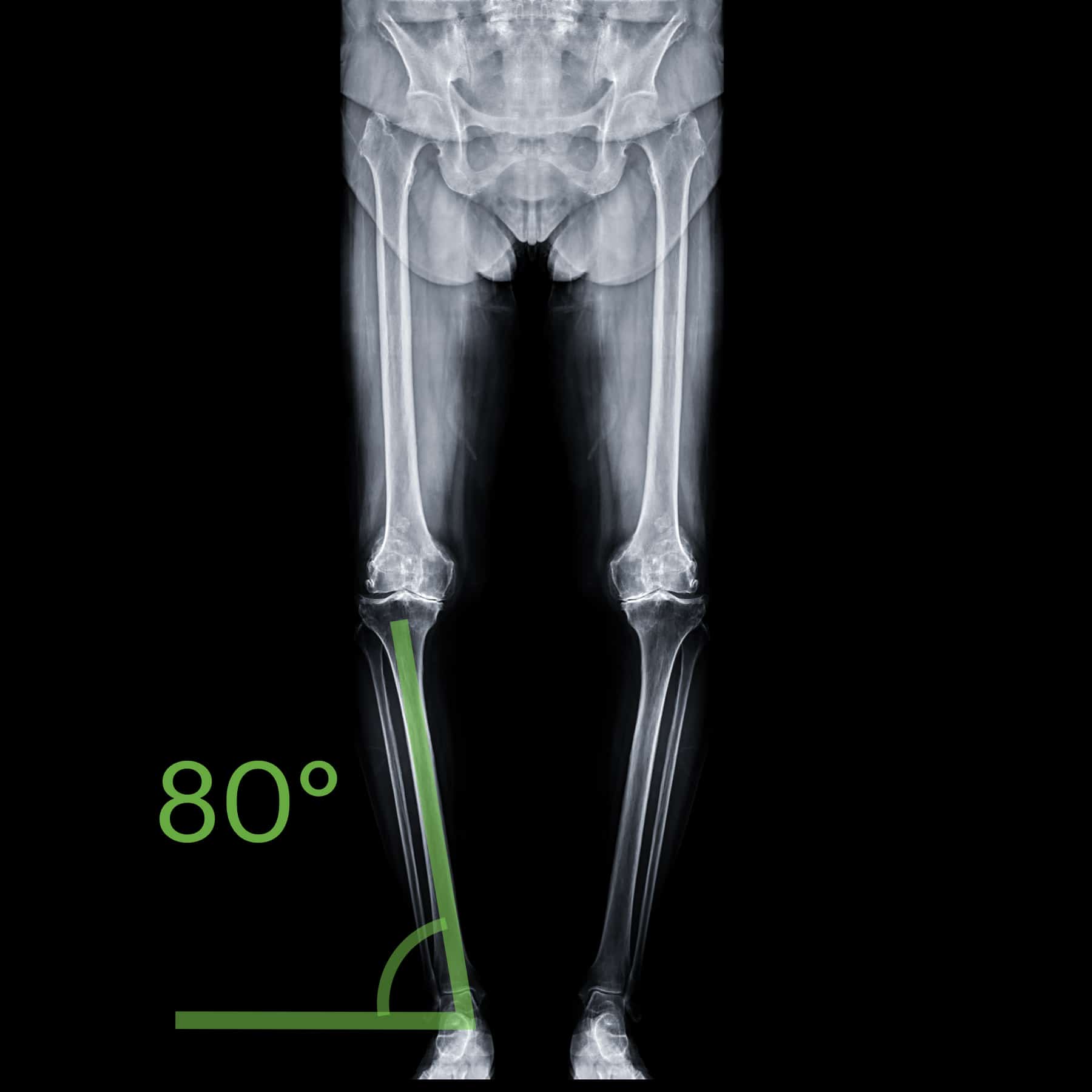
つまり、膝の内側ばかりにストレスが集中するのは、
- 下腿骨が外側に傾く(内反方向への角度変化)
- 地面反力線が膝内側へ集中する
という “構造的な帰結” なのです。
これは膝の運動療法をどれだけ行っても変わりません。
下腿骨の傾きを修正できるのは、足元(特に足指)だけです。
メカニズム②|踵骨の倒れ込み(外反足)が膝内側へストレスを集中させる理由
下腿骨の傾きを語る上で、
もっとも重要なのは 踵骨の角度 です。
踵骨は足部の“土台”であり、
建物で言えば基礎のコンクリート部分に相当します。
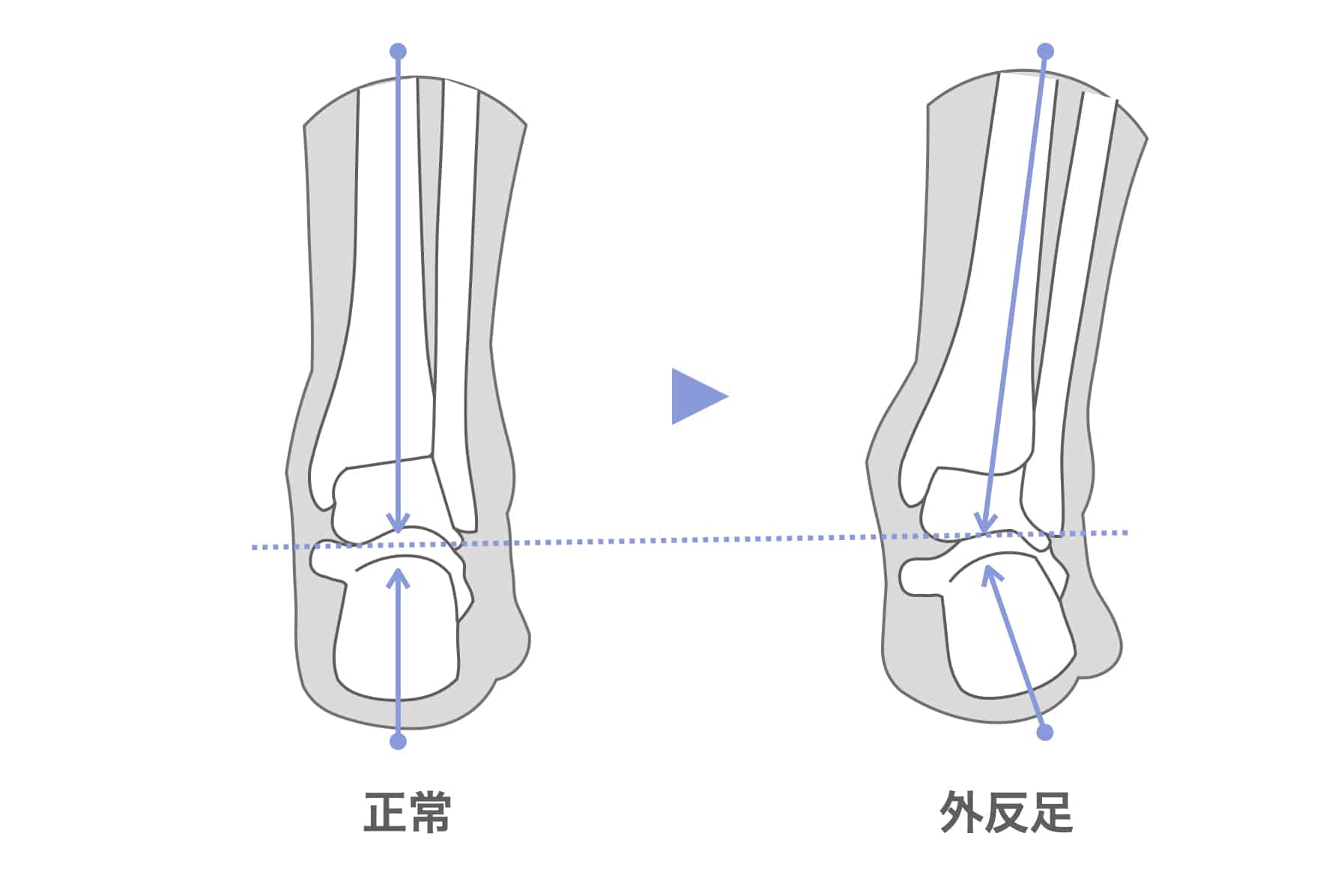
しかし現代人では、この踵骨が
👉 内側に倒れこむ(=外反足)
という状態になっているケースが非常に多い。
なぜ倒れるのか?
■理由①:足指が使えていない
足指が浮いている(浮き指)
足指の関節が曲がっている(屈み指)
このように足指の「接地性」が失われると、
足部の筋群は骨同士を支えきれず、踵骨の倒れこみ(外反)を引き起こします。
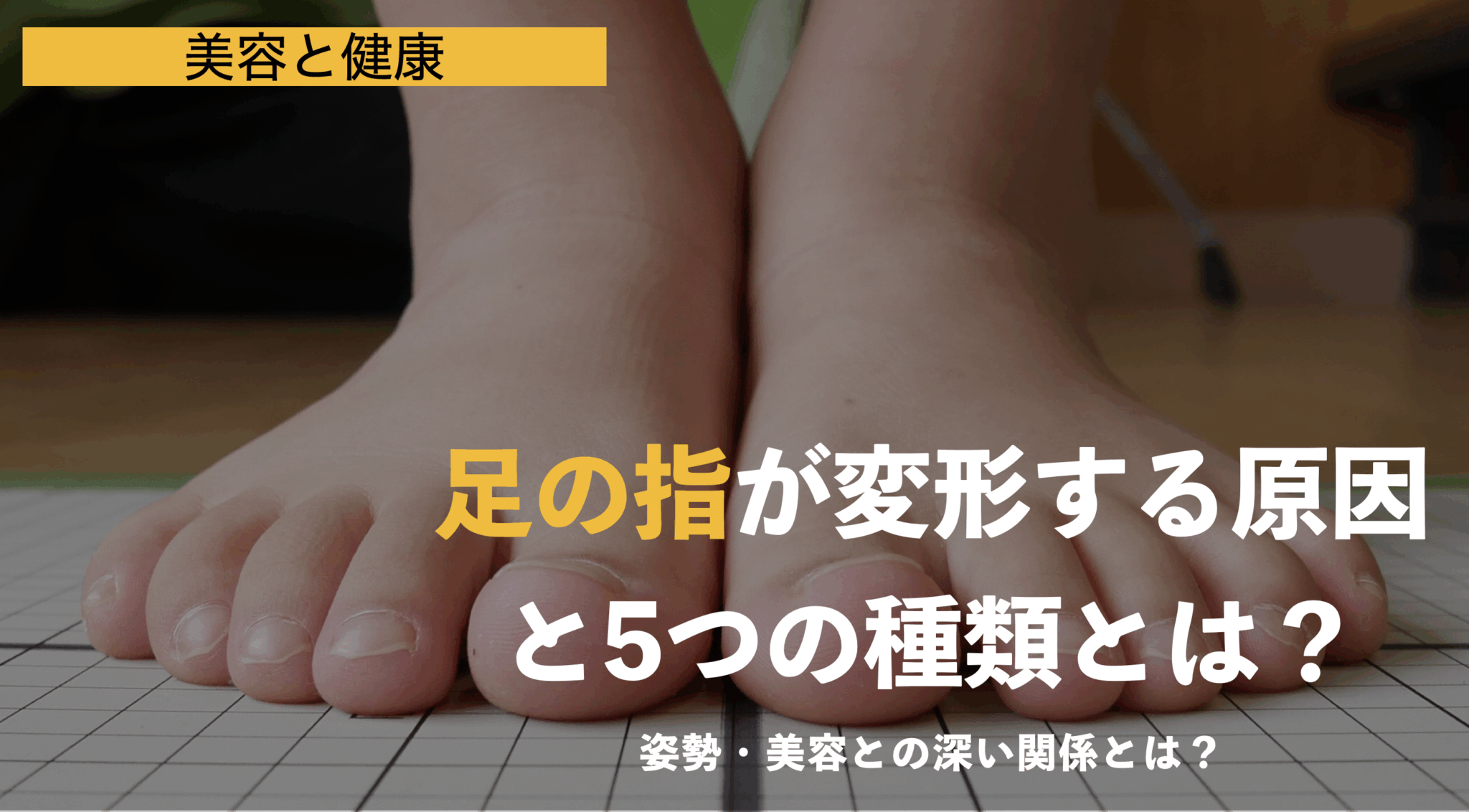
接地を失った指は、
建物の柱が1本折れたような状態です。
外反足 → 下腿骨外傾 → 膝OA のシンプルな連鎖
足指がうまく使えない
↓
足アーチが潰れる
↓
踵骨(かかと)が内側に倒れる
↓
その上に乗る下腿骨が外側に傾く
↓
膝内側の軟骨にストレス集中
↓
OA(変形性膝関節症)へ
これは専門家でなくとも理解できる 純粋な物理現象 です。
メカニズム③|小指の変形が“回外足”をつくり、膝を外側へ押し倒す力になる
膝OAの患者さんを診ると、
ほぼ例外なく小指が変形しています。
✔ 小指は「足の外側を守る最後のストッパー」
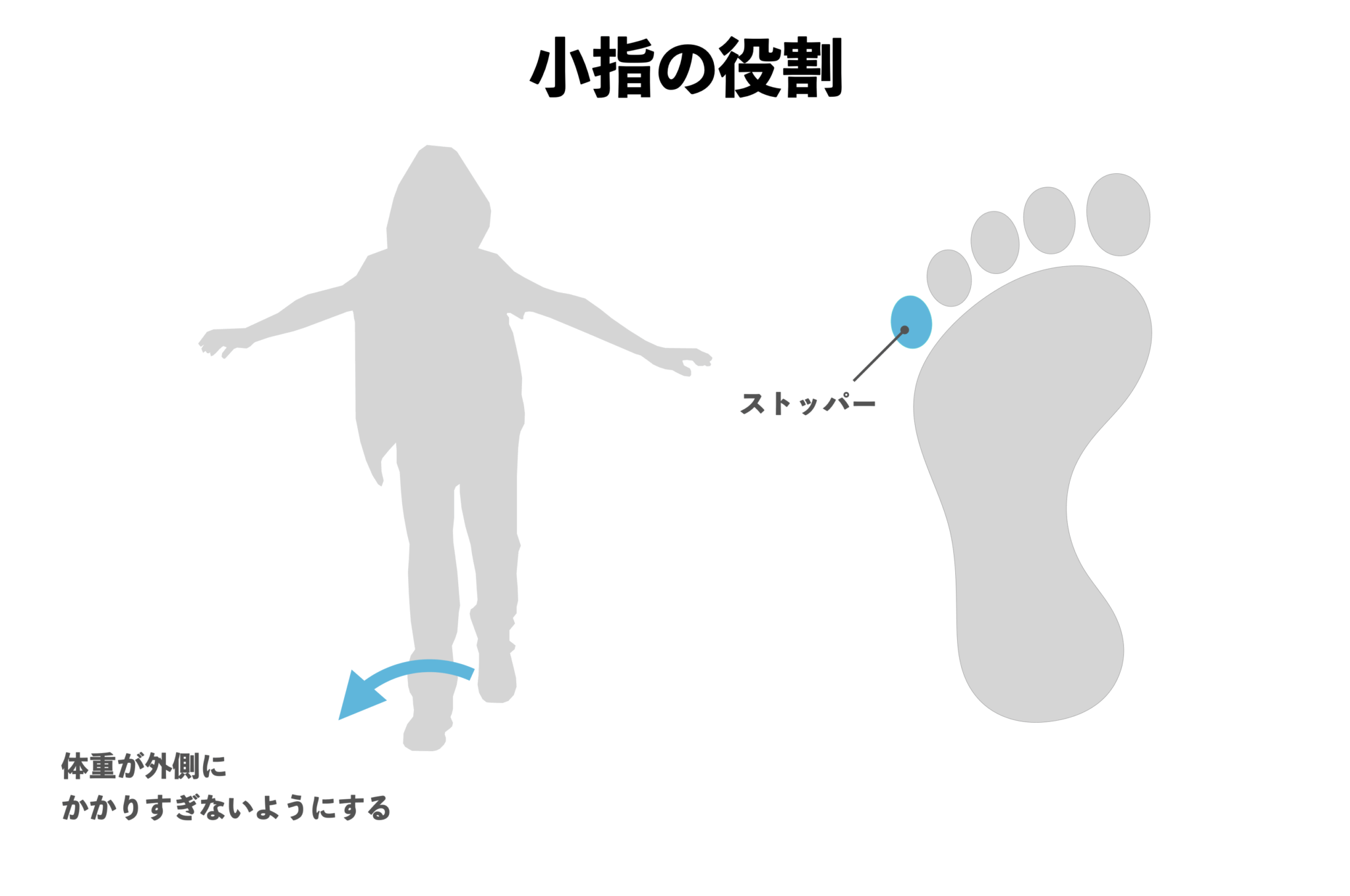
正常な足は、
- 母趾球
- 小趾球
- 踵
の3点でバランスを取ります。
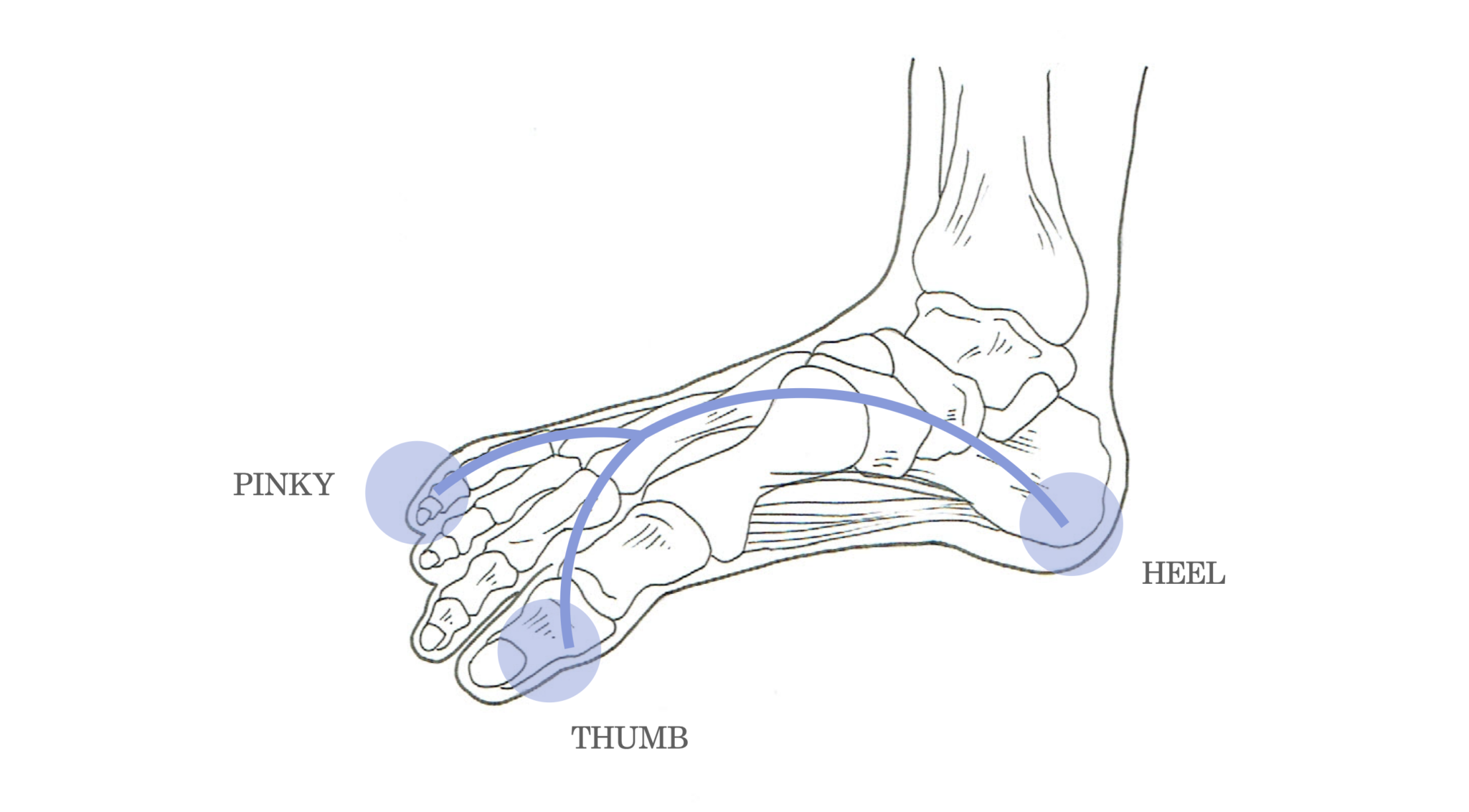
しかし、小指が曲がったり浮いたりすると、
外側のストッパーが機能しなくなるため、
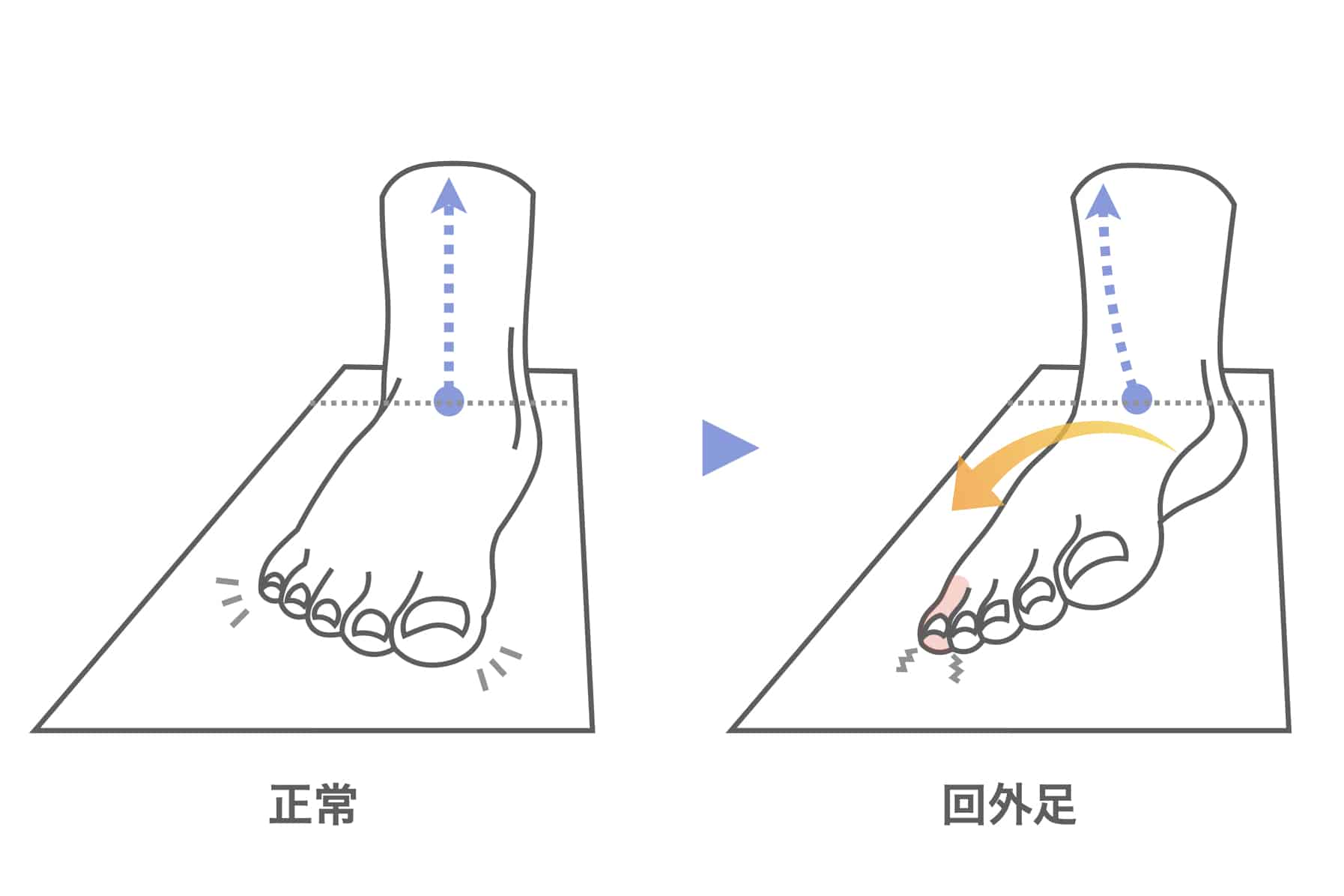
歩行のたびに足が外側へ倒れる
↓
“回外足”が癖になる
↓
下腿骨が外方向へねじれたまま固まる
という流れが固定化します。
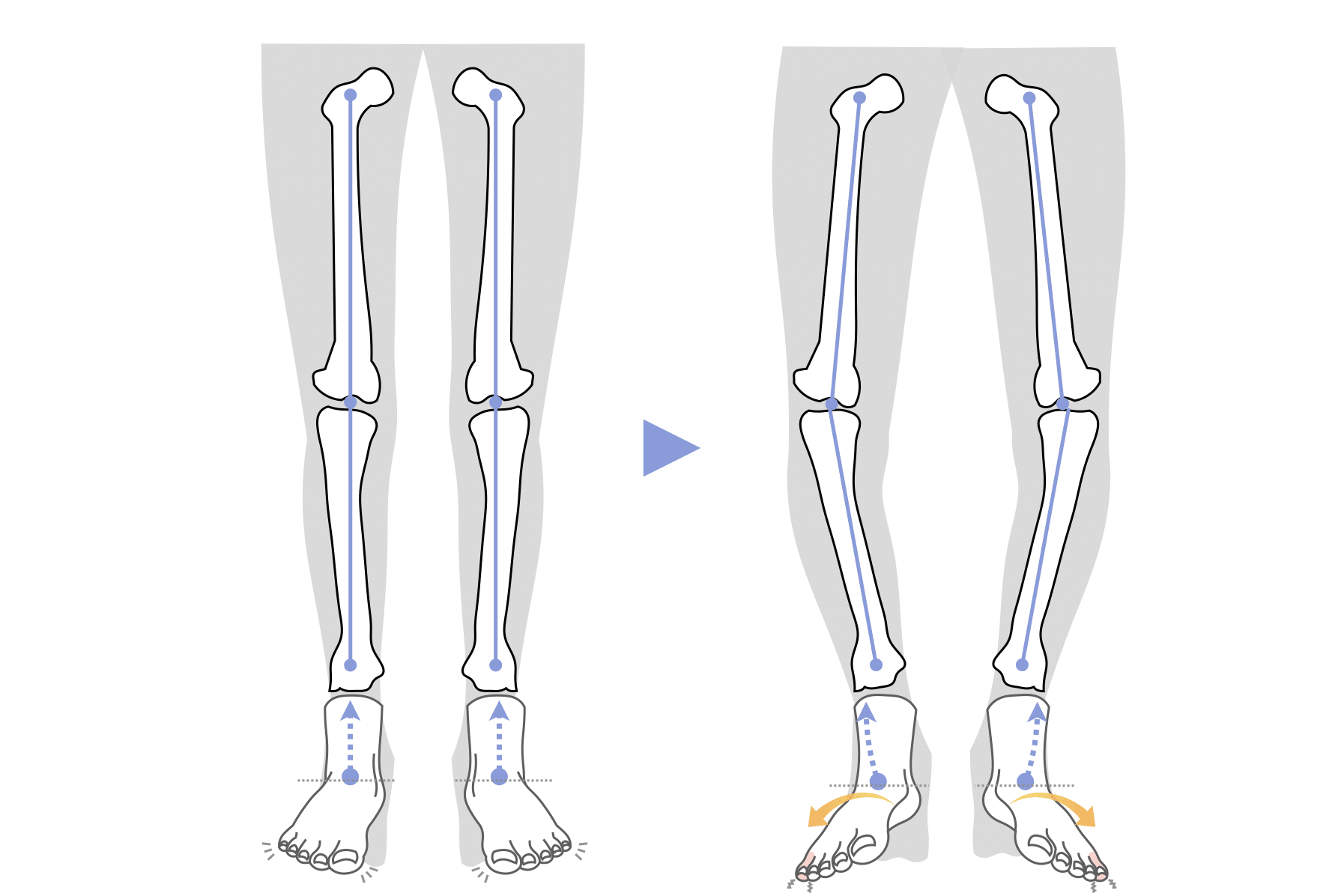
回外足が膝OAを進行させる理由
歩いているとき、
足部が外側に倒れる回外動作が起こると、
- 下腿骨が外にねじれる
- 膝内側に圧縮ストレスが入る
- 軟骨修復が追いつかなくなる
- OAの進行が止まりにくい
こうした “膝への力学的な偏り” が蓄積されます。
図で理解する「足指 → 膝」の力学連鎖
- 接地しない
- 支えが失われる
- 足アーチが保てない
- 踵の支えが不安定に
- 距骨の角度が変わる
- 外反モーメントの増大
- 膝内側へ応力集中
- 修復能力が低下し構造変化
- 炎症 → 痛みへ
研究レビュー⑤
「内側型膝OAに多い“回内足(扁平足)”——静的アライメントと膝内側ストレスの関連」
2010年に La Trobe University の Levinger ら が行った研究では、内側型膝OA(medial compartment knee OA)患者の足部姿勢を評価した結果、足部の pronation(回内)=扁平足傾向が有意に強い ことが報告されています(DOI: 10.1186/1757-1146-3-29)。
この結果は、
- 足部の構造的崩れと膝OAが 同時に存在しやすい こと
- 足部アライメントの乱れが、膝内側への負荷と関連する可能性 を示唆するものであり、膝OAと足部アライメントの関係を静的評価で裏づける基礎データといえます。
研究レビュー⑥
「扁平足傾向は歩行時の“膝内側接触力”を高める——動作解析による力学的検証」
2022年に 北海道大学の Kubo ら が行った研究では、膝OA患者の歩行中の膝関節にかかる内側接触力を3D動作解析で測定した結果、Staheli Arch Index(アーチ指数)が高い=扁平足傾向の人ほど、膝内側の接触力が増える傾向 があると報告されています。
これは、
- 扁平足傾向 → 脛骨の内旋(tibial internal rotation)
- 内側荷重の偏り(medial loading)
という力学的連鎖が、膝内側のストレス増加と関連する可能性を示した重要な研究です。
静的な関連(研究⑦)に加え、動作中の“力の流れ”を明確に示しており、
足指・足部 → 膝内側ストレス
という構造仮説とも一致します。
メカニズム④ 「下腿骨の角度」は“膝のリハビリだけでは絶対に変わらない”
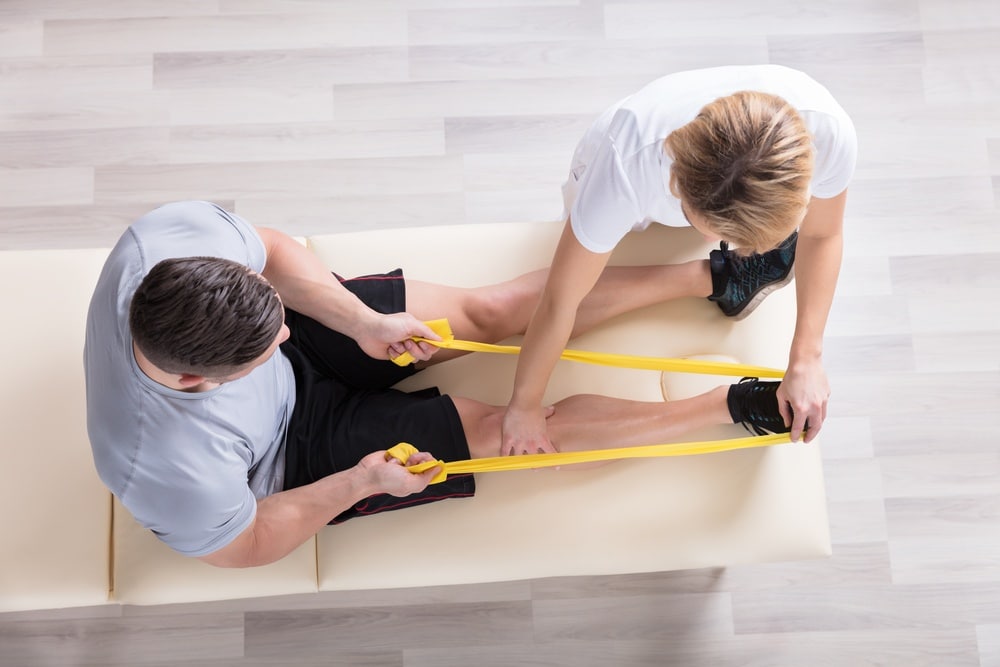
膝OA治療で最も見落とされている事実はこれです。
下腿骨の角度は、膝より下(足部)が変わらなければ絶対に変わらない
理学療法・筋トレ・電気治療・マッサージなどは
膝周囲の筋肉や滑膜には影響しますが——
下腿骨の“傾き”そのものを修正することは不可能です。
なぜなら、その傾きは
- 足指
- 足部のアーチ
- 踵骨
- 距骨下関節の角度
といった 足部の構造が決めているから です。
足指が変形する本当の理由 ——靴・靴下・歩行環境が作る“現代病”
原因①:靴の選び方の誤り
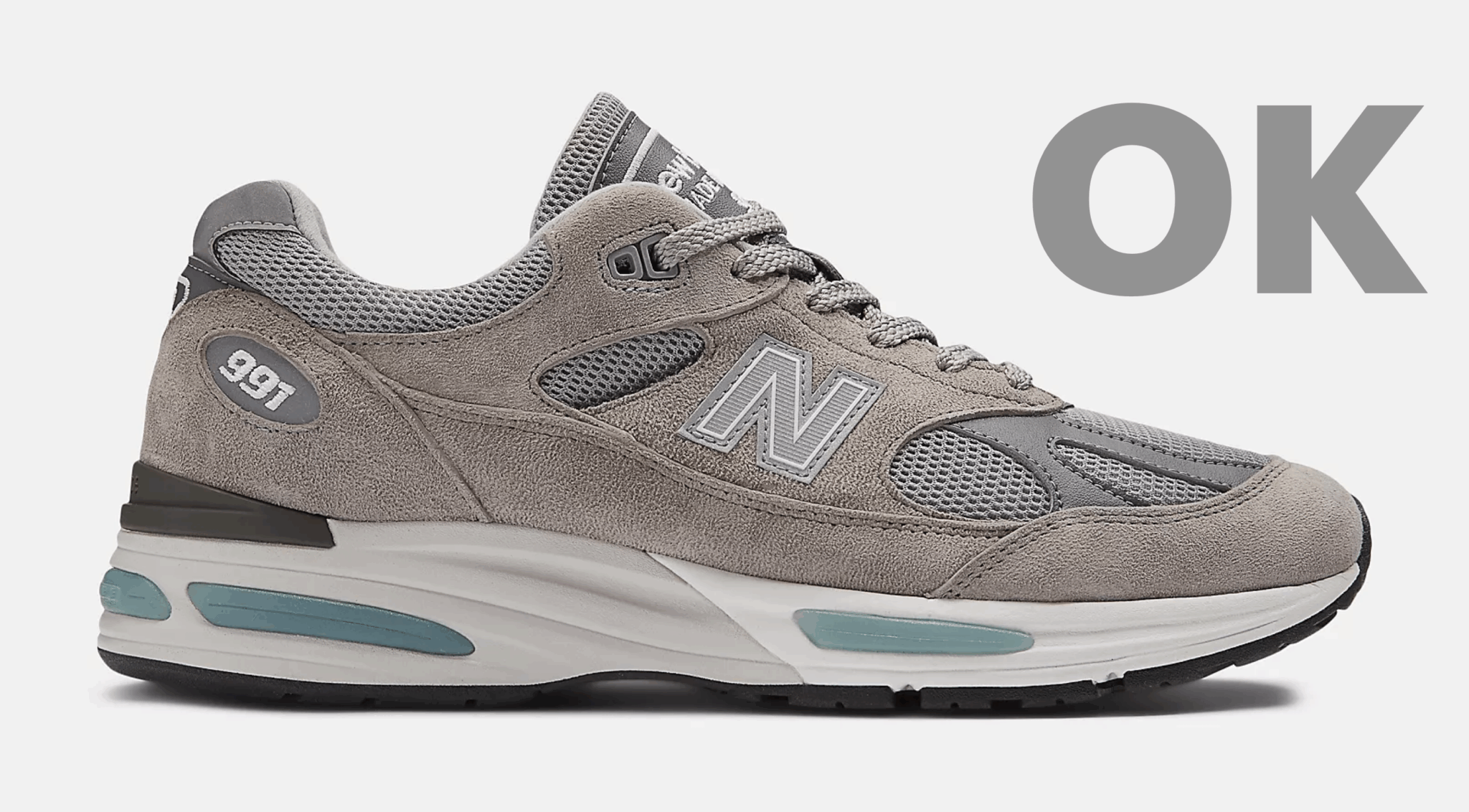
次のような靴は足指を機能不全にしやすい傾向があります。
- スリッパ・サンダル生活
- 幅広で前後に足が滑る靴
- クッションが柔らかすぎる靴
- 紐を締めずに履く習慣
- ヒールカウンターが柔らかい靴
- 凹凸インソールによる足指の過剰刺激
- つま先が持ち上がった靴(ロッカーボトム)
どれも 足指の接地を失わせる ため、
足部筋力が低下し、踵骨の倒れ込みへとつながります。
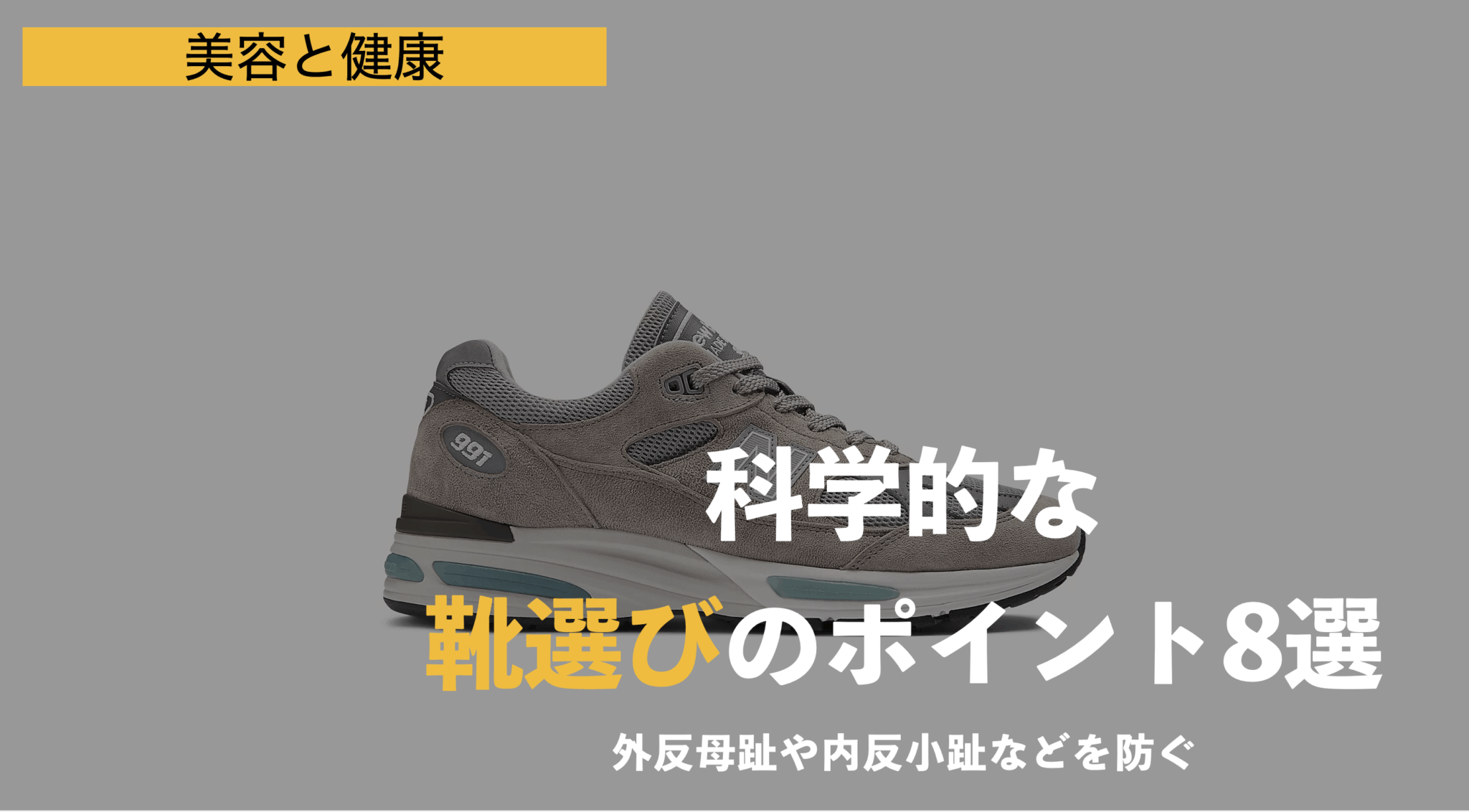
原因②:靴下の滑り・圧迫
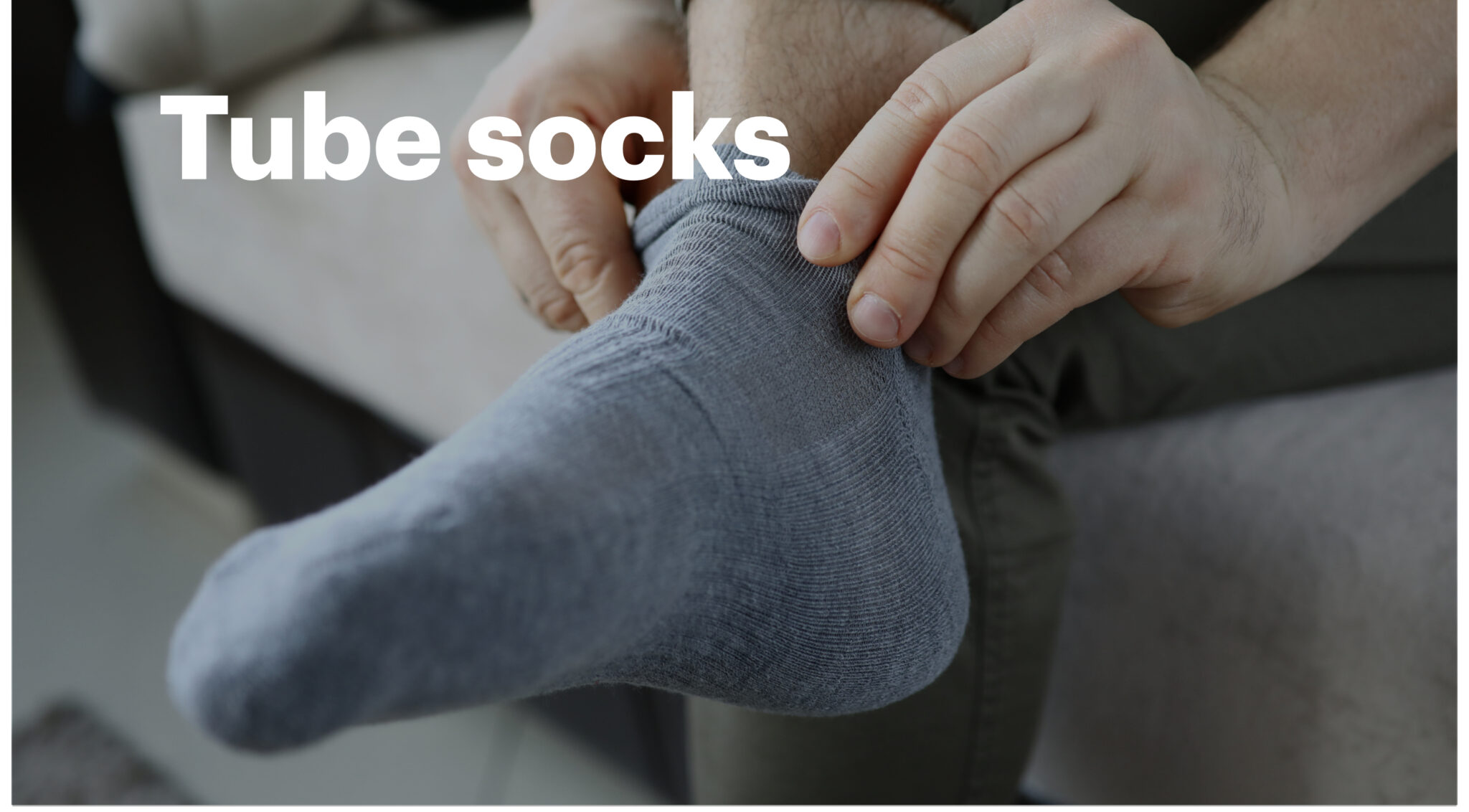
- 綿・シルクの靴下は滑りやすい
- 筒型ソックスは4〜9gf/cm²の圧迫がかかる
- 滑り+圧迫で足指が曲がりやすい
結果として、
- 浮き指
- 屈み指
- かがみ指
- 内反小趾
が生じやすく、これが 足部全体の崩れの起点 になります。
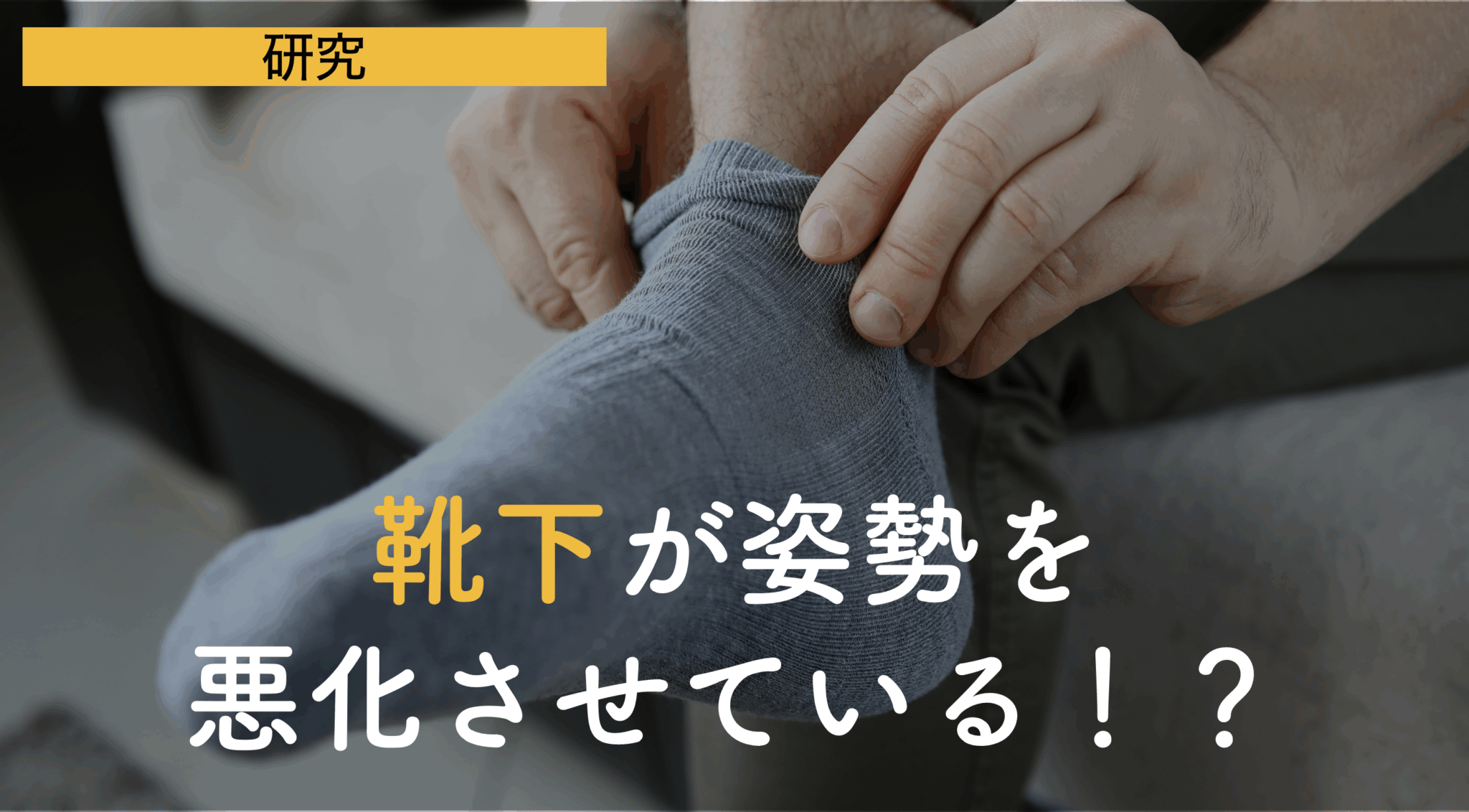
原因③:室内歩行環境(スリッパ・床材)
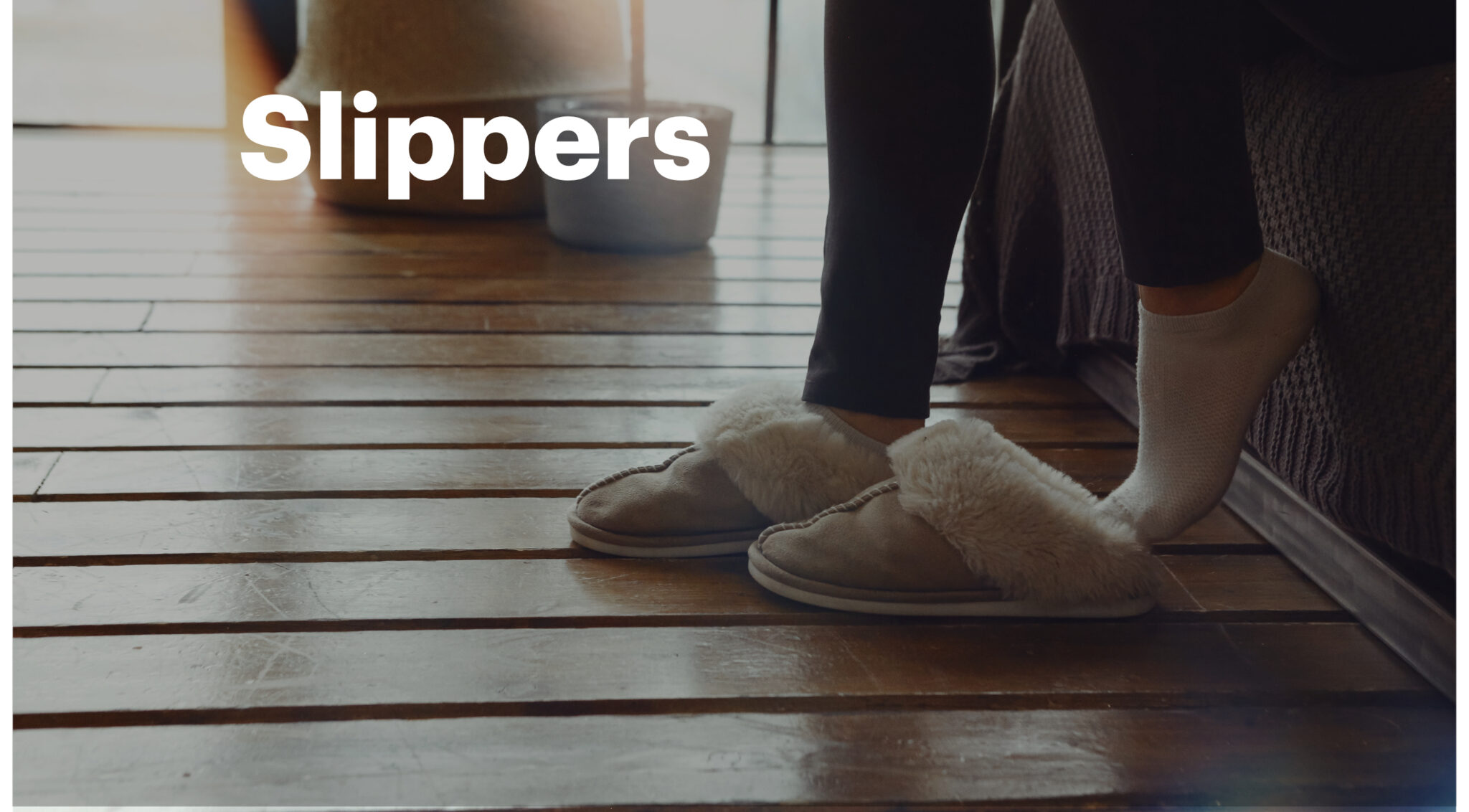
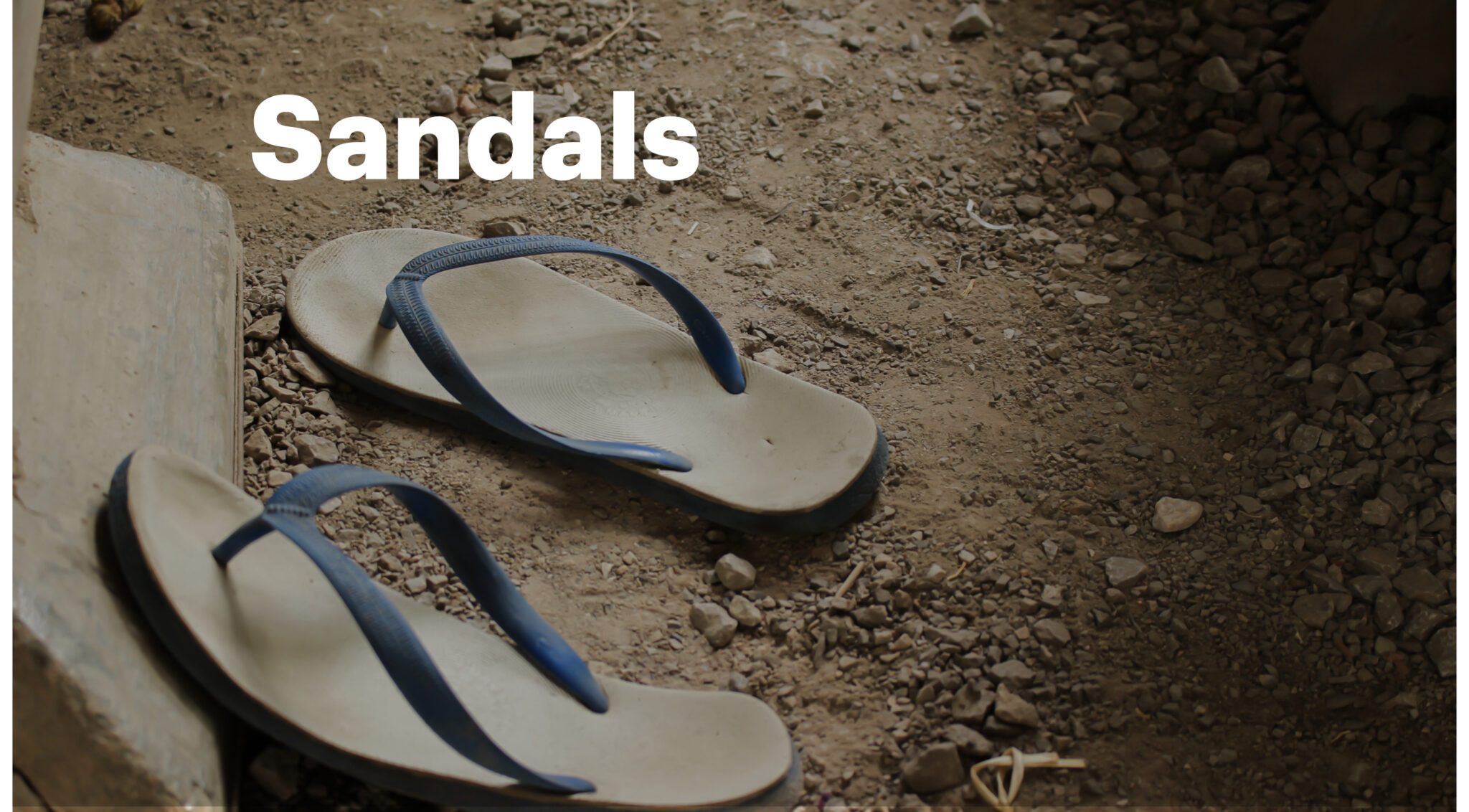
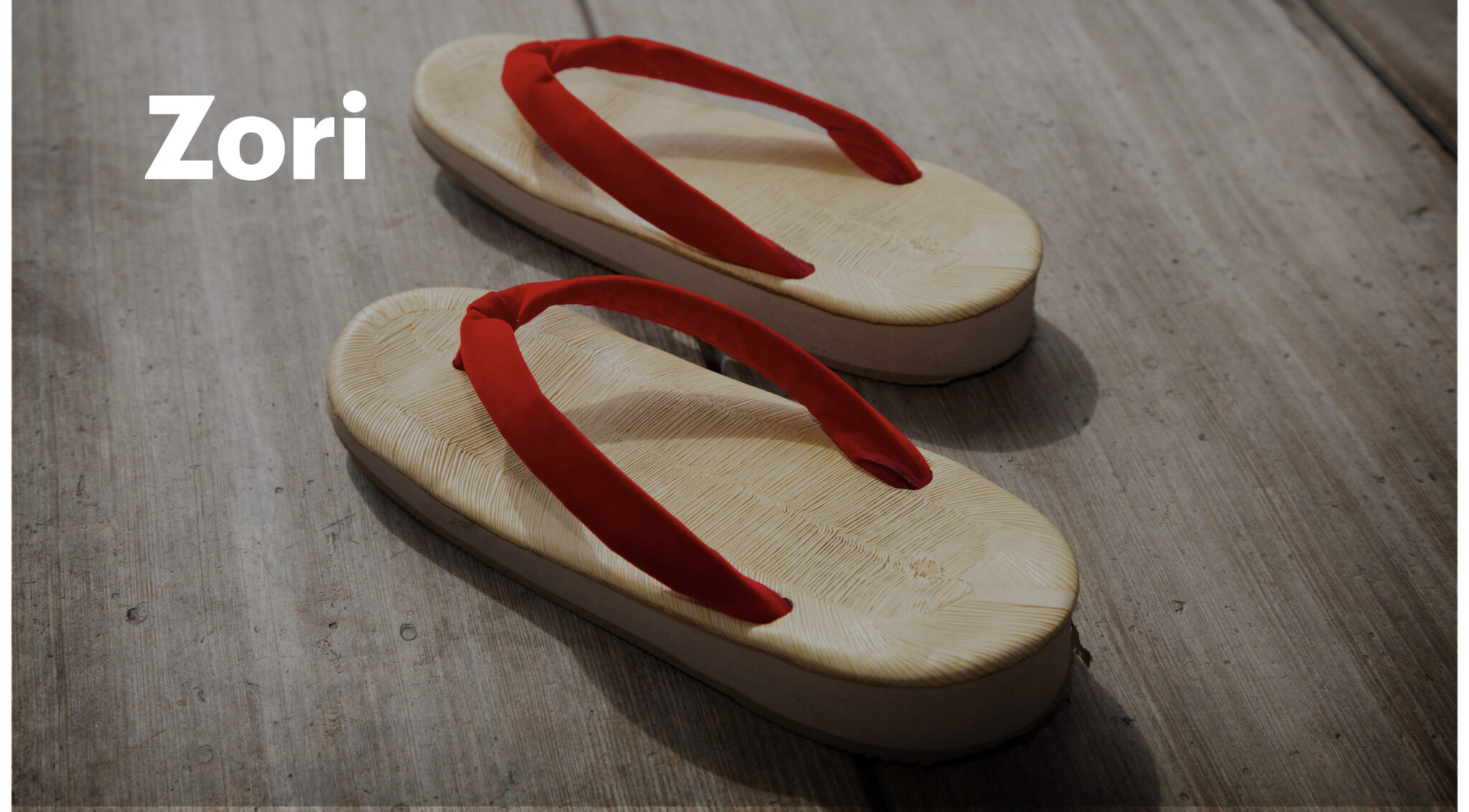
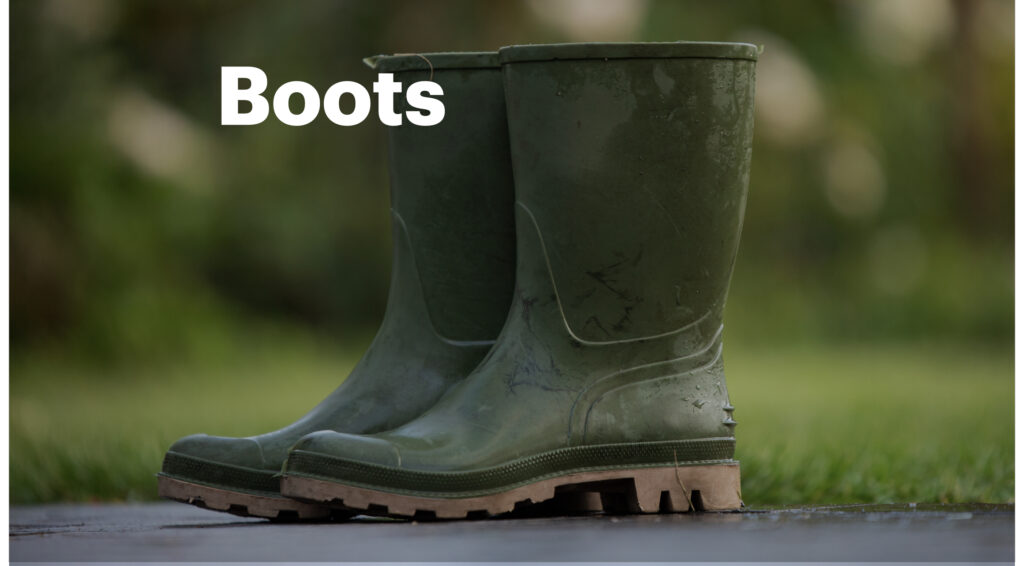
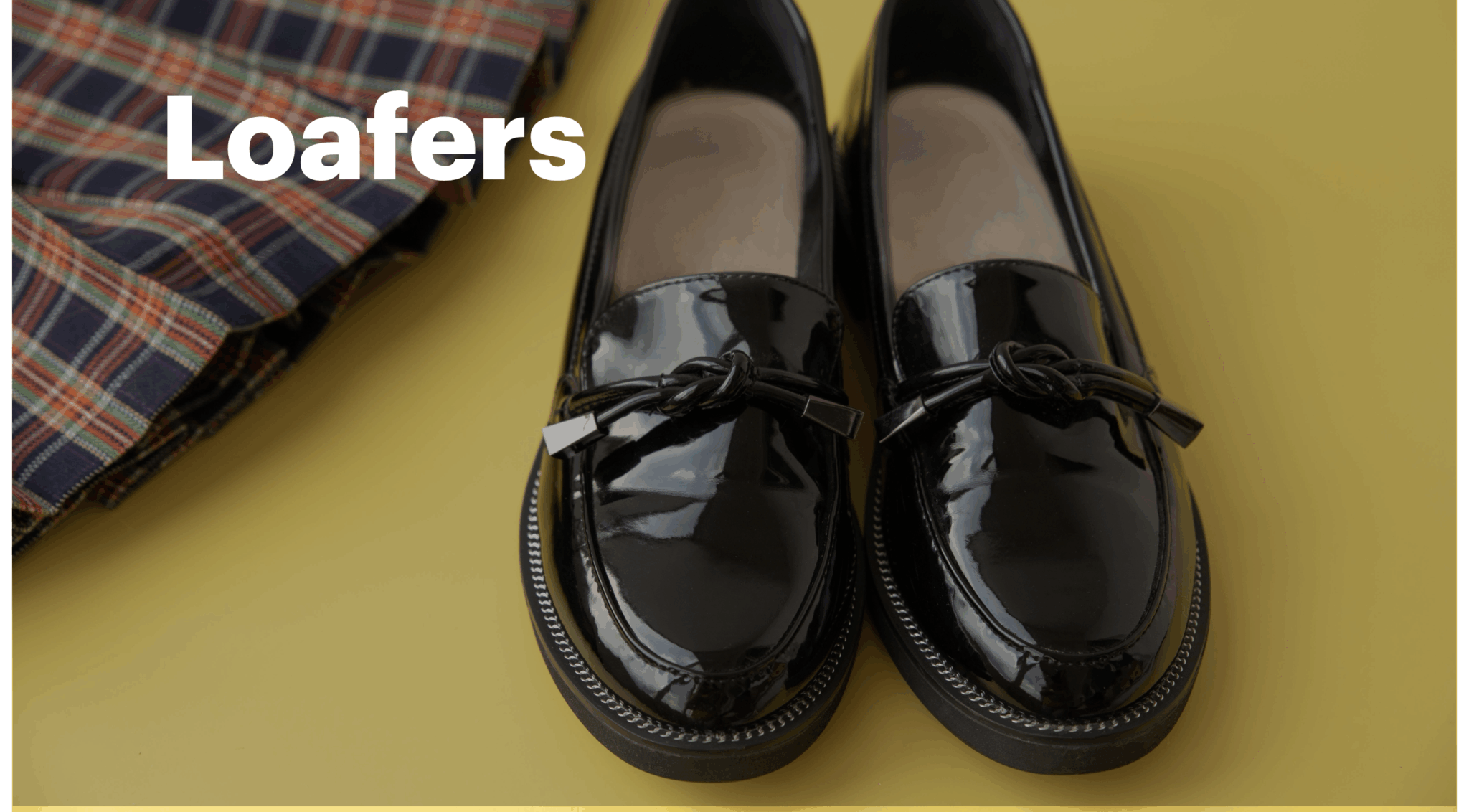
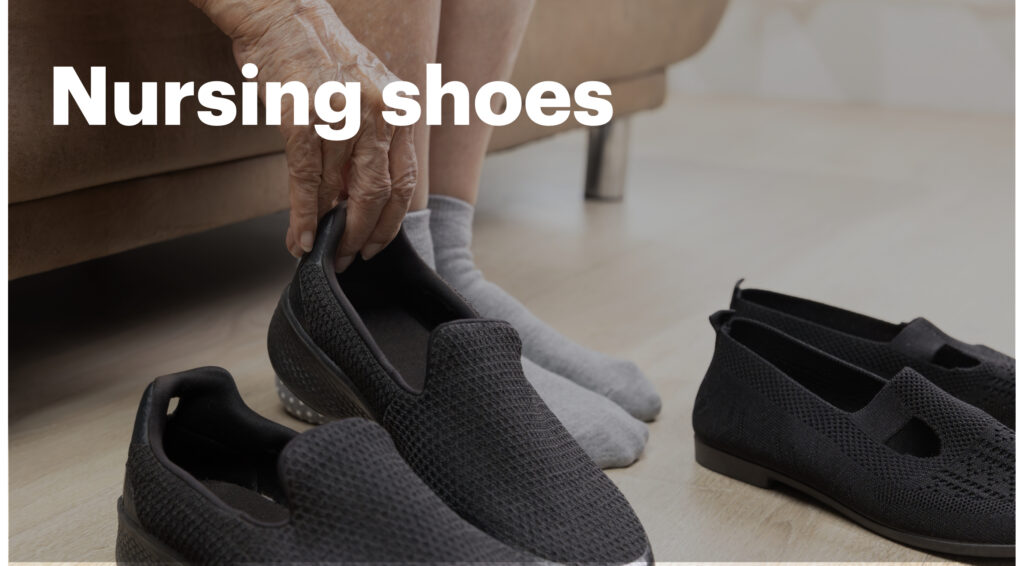
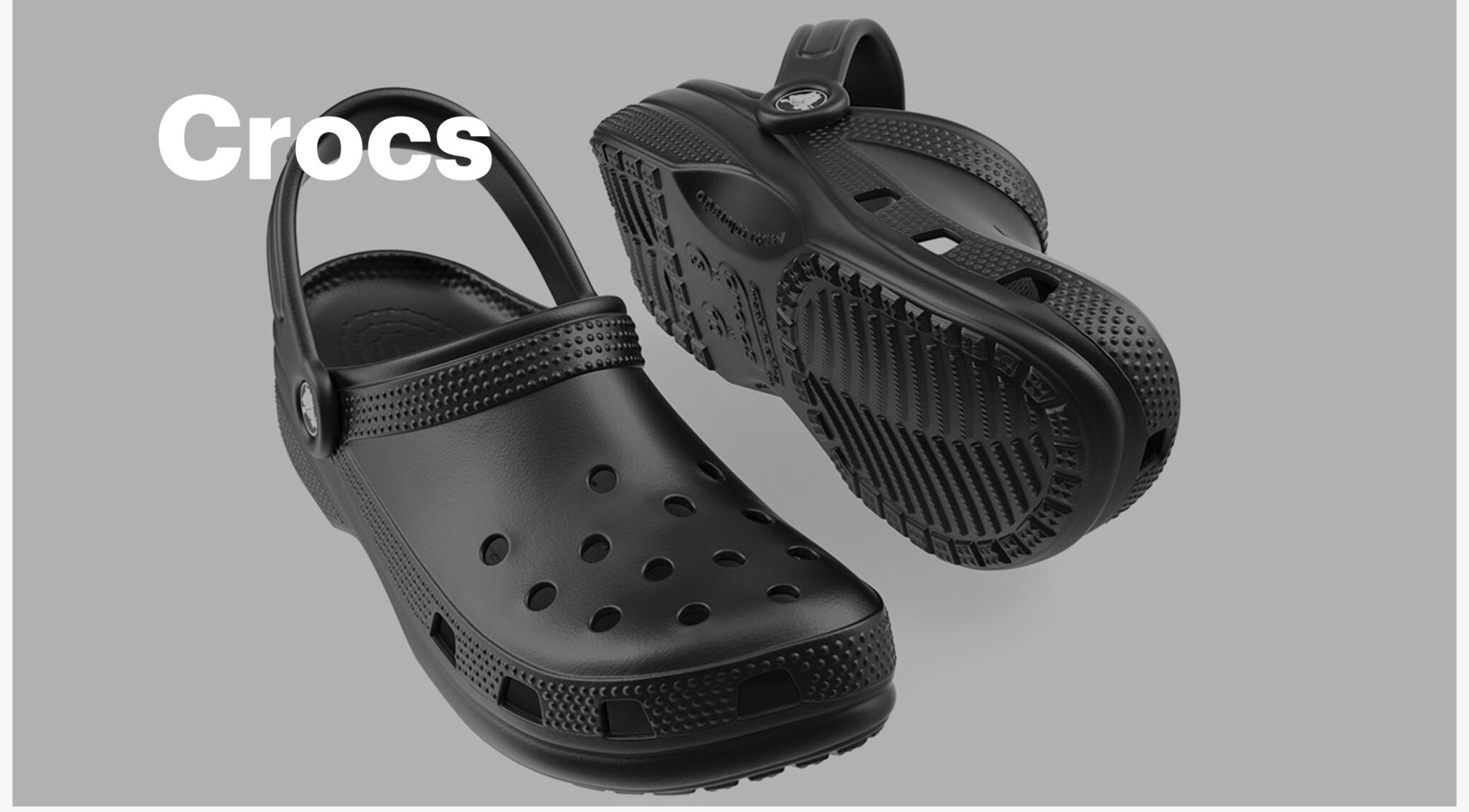
スリッパ・サンダル・草履は足指を使わせにくく、
- つま先が浮く
- 指が曲がる
- ふくらはぎの過緊張
- 回外足の固定化
などの影響を与えやすい。
現代のフローリング環境は滑りやすいことも問題です。
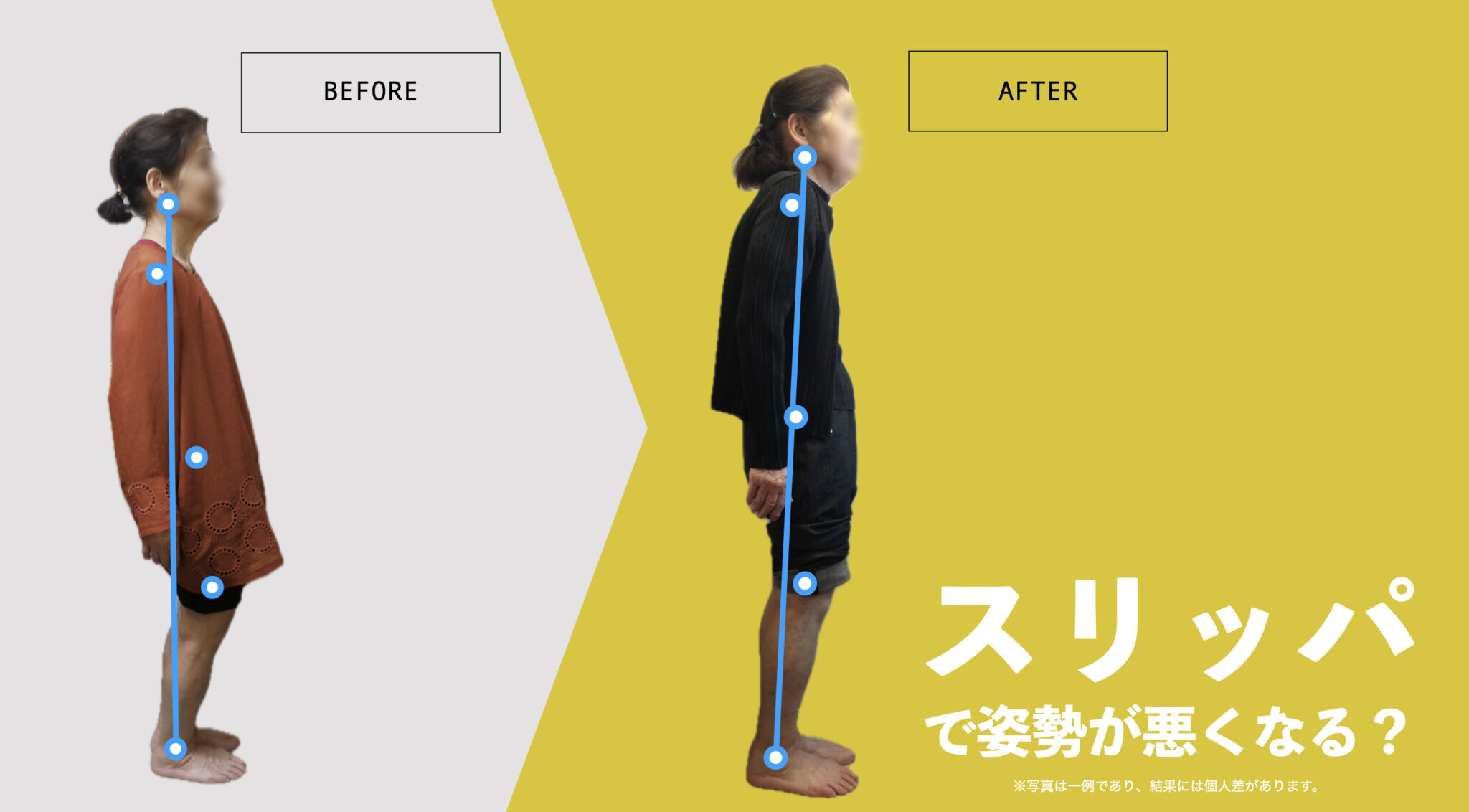
ここまでの総まとめ
✔ 足指の変形
↓
✔ 踵骨の倒れ込み(外反足)
↓
✔ 下腿骨の外傾
↓
✔ 膝内側にストレス集中
↓
✔ 軟骨修復が追いつかず構造が変わる
という “構造性メカニズム” が、
膝OA(内側型)の進行と深く関連していることは明らかです。
臨床現場で見えてきた「足指と膝OAの関係」 ——10万人以上の分析で感じた“共通する構造”

私はこれまで、
病院・クリニック・研究現場・足指研究所で
10万人以上の足と姿勢を観察 してきました。
そこで確信したのは次のことです。
膝が痛い人の多くに、足指の機能不全が認められる。
もちろん、すべての人が同じではありません。
膝痛は多因子であり、必ず医療機関での診断が必要です。
しかし、構造的視点で整理すると
次のような“共通パターン”が多く存在します。
- 浮き指 → 指が地面に触れない
- 屈み指 → 歩行中に曲がって固定される
- 内反小趾 → 小指のストッパー消失
- 回外足 → 下腿骨が外に倒れる
- 膝内側へのストレス増加傾向
リハビリで膝周りをケアしても戻りやすい背景には
足部(とくに足指)からの影響が残り続ける ことがあります。
これは「治療効果が弱い」のではなく、
下流(膝)だけを整えても、上流(足指)が変わっていない
という構造的理由によるものです。
膝OAは“全身の姿勢の結果”として現れる ——足指 → 足部 → 下腿骨 → 骨盤 → 脊柱 へ続く長い連鎖
私はこのような
「足指という末端の機能不全が、
下腿骨・膝・骨盤・脊柱へと連鎖する構造」を
Hand-Standing理論と呼んでいます。
人の足は単なる土台ではなく、
手と同じように“指で姿勢と力を制御する器官”です。
膝OAが膝だけで説明できないのは、
この末端制御が崩れた結果として、
力の流れ全体が歪むためです。
膝は身体の真ん中にある関節ですが、
その動きは 上半身と下半身の力学バランスを受け取る場所 です。
そのため膝OAは、
局所の変化ではなく “全身の姿勢の帰結” として捉える必要があります。
足指の接地が変わる
↓
足部のアーチが変わる
↓
下腿骨が傾く
↓
膝が受け取る負荷が変わる
↓
骨盤や脊柱のアライメントが変化する
このような 運動連鎖(kinetic chain) を理解することで、
「膝だけを診ても答えが出ない理由」が明確になります。
科学的視点のまとめ ——痛みと構造の関係は“単純ではない”
Part 1〜2の研究レビューから、
膝OAに関する重要なポイントを整理します。
✔ MRI異常と痛みは一致しない
(Burt 2013, Guermazi 2012)
MRIで異常があっても痛みがない人、
逆に異常がなくても痛みがある人が存在します。
異常=痛み ではありません。
✔ 膝OAの進行は「体重よりアライメントが影響」
(Brouwer 2005, 2007)
特に O脚(内反アライメント)は進行リスク2.9倍。
脚の並びが力の偏りを決めます。
✔ 筋力低下だけでは説明できない
(Zuha 2022)
大腿四頭筋の弱さと痛みに有意な関連が出ないケースもあります。
筋力は要因の一部であり、全体像ではありません。
✔ 足指 → 足部 → 下腿骨 → 膝 という構造連鎖は無視できない
研究は膝OAが“膝中枢の問題だけではない”ことを示し、
臨床でも足指との関連を多数観察します。
最後に|膝OAを正しく理解するための“視点の転換”
私がこの記事全体で最も伝えたいことは一つです。
膝は“結果として痛んでいる”。
原因はもっと下にある。
膝だけを見ると、
軟骨や半月板や炎症だけが原因に見えます。
しかし、構造的視点で全体を見ると、
その背景には 足指 → 足部 → 下腿骨 という長い連鎖が存在します。
もちろん、これは一つの視点です。
膝OAの原因は多因子であり、個々の状況で異なります。
しかし、足指から全身のアライメントを見直すという視点は、
これまで見落とされてきた「もう一つの可能性」であり、
あなたの身体理解を深めるヒントになるはずです。
足指の研究から生まれた「環境づくり」という視点
足指研究所では、20年以上の臨床経験と、東京大学・石井直方名誉教授と実施した観察研究を通して、
「足指が使いやすい環境が整うと、姿勢・重心の安定性に関わる“変化傾向”が見られることがある」
という視点を大切にしています。
足指は本来、「広がる・伸びる・接地する」という生理的な動きを持ちますが、
靴・靴下・床の滑りやすさなどによって、その働きが阻害されることがあります。
私たちは、
「どうすれば日常で足指が動きやすい環境を作れるか」
という点を中心に開発と研究を続けています。
【研究データ|足指・姿勢・筋活動の観察記録】
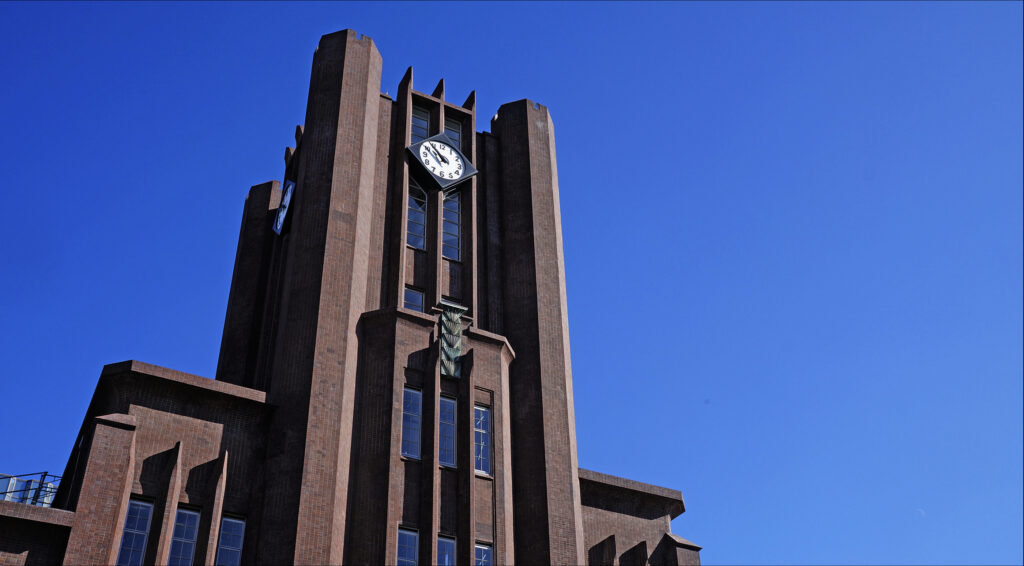
2020〜2022年、東京大学・石井直方名誉教授の指導下で実施。
延べ96名を対象に、以下の構造的特徴の推移を多角的に観察しました。
- 足指の動き・配置
- アーチ構造
- 姿勢指標
- 体幹支持筋・口腔周囲筋・下肢筋の活動傾向
“足指が使いやすい環境づくり”を行った際、
足指・姿勢・呼吸に関連する筋活動などに構造的な変化傾向が見られました。
【足指が使いやすい体へ|4つのアプローチ】
日常で“足指が働きやすい環境”をつくるための基本ポイントです。
1. ひろのば体操(足指をゆるやかに伸ばす)
2. 靴の見直し(足指が押しつぶされない設計)
3. 小股歩き(足指が自然に使いやすい歩き方)
4. 室内環境の調整(滑りやすい床・スリッパを避ける)
【YOSHIRO SOCKS|構造とものづくり】
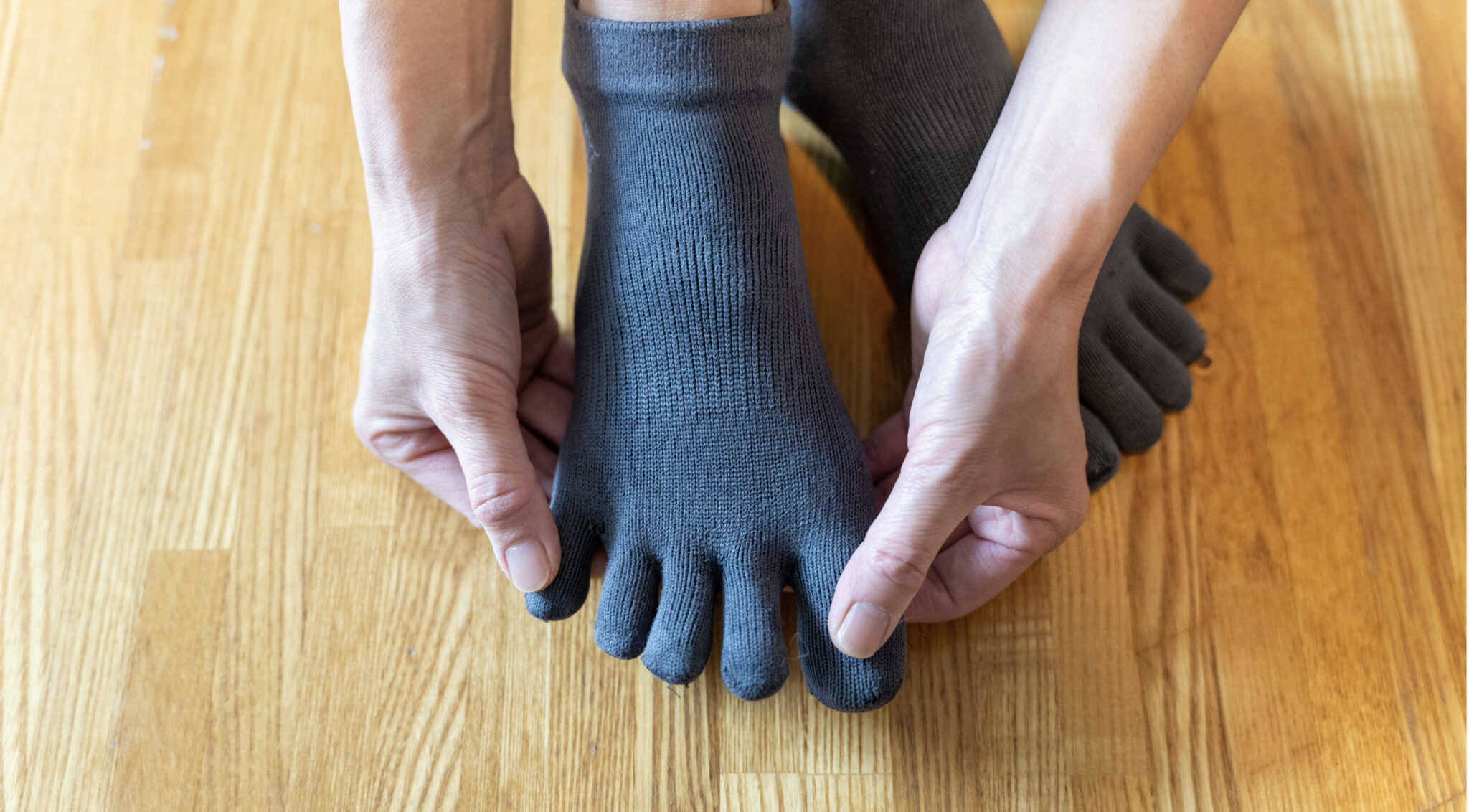
——足指が使いやすい“環境づくり”をめざした生活用品
足指の働きを妨げる「環境」そのものに着目し、
奈良の専門工場とともに、糸・密度・摩擦・張力などを精密に検証してきました。
● 構造のポイント
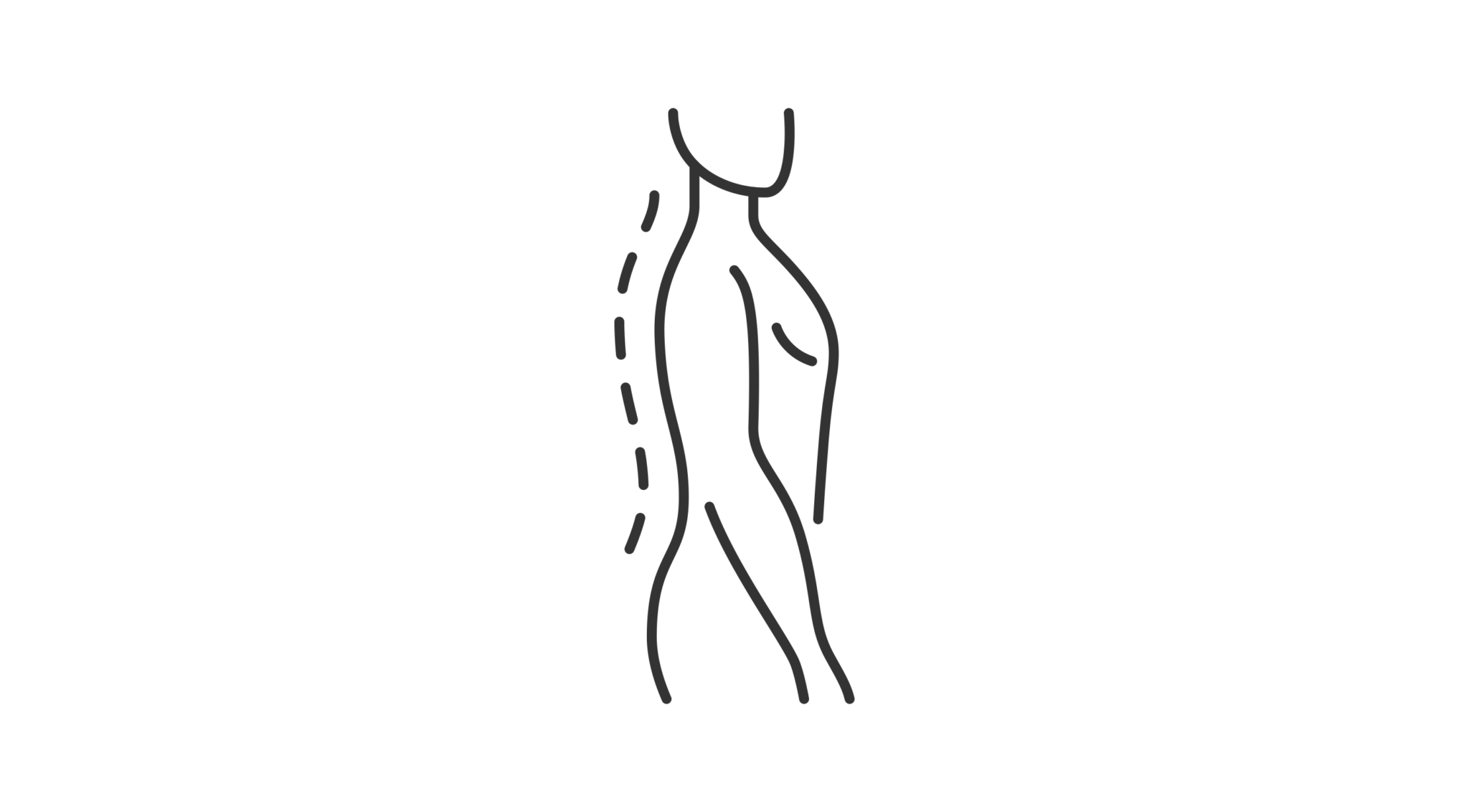
姿勢の安定性に配慮した
摩擦構造
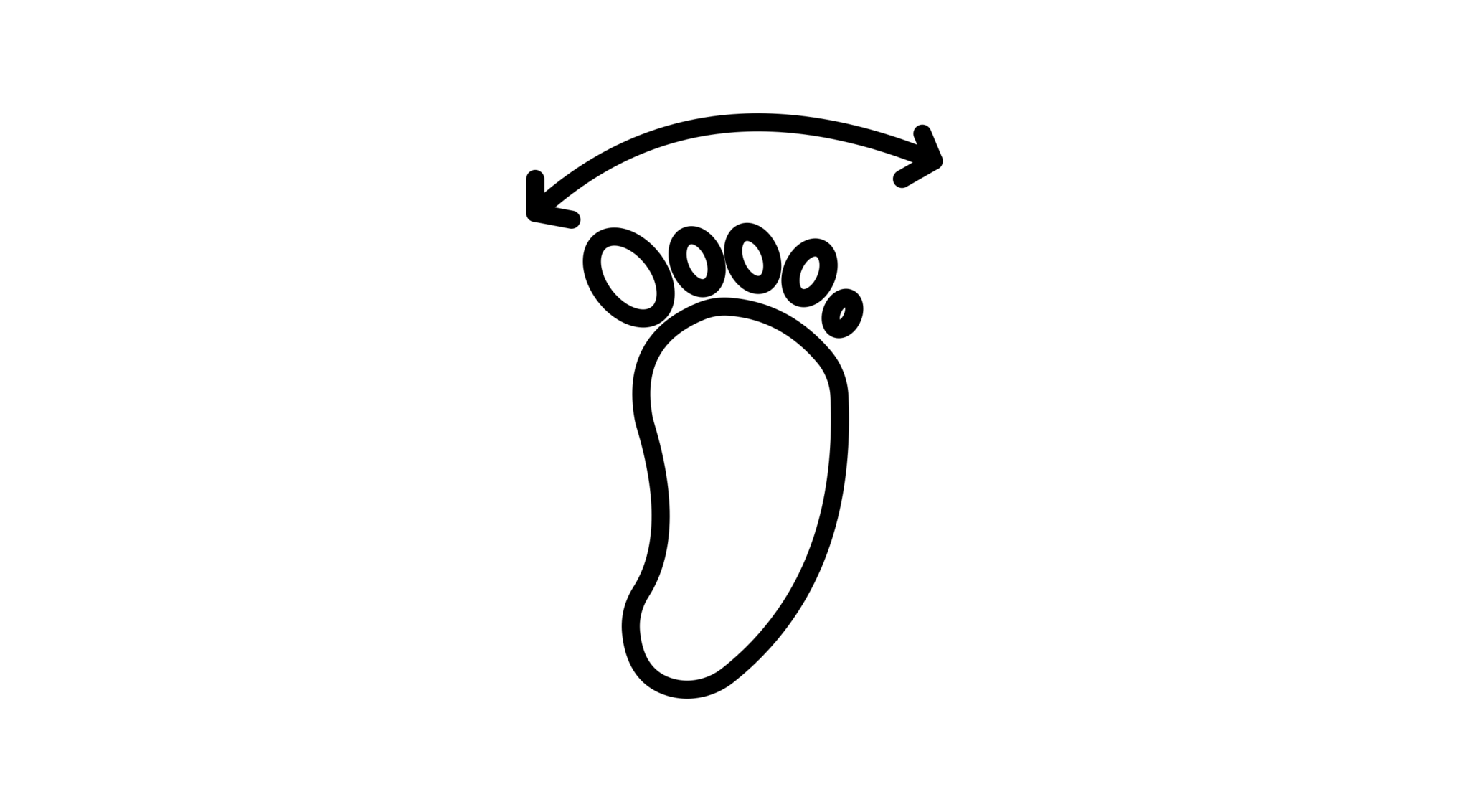
自然な足指の開きを支える
立体フォルム
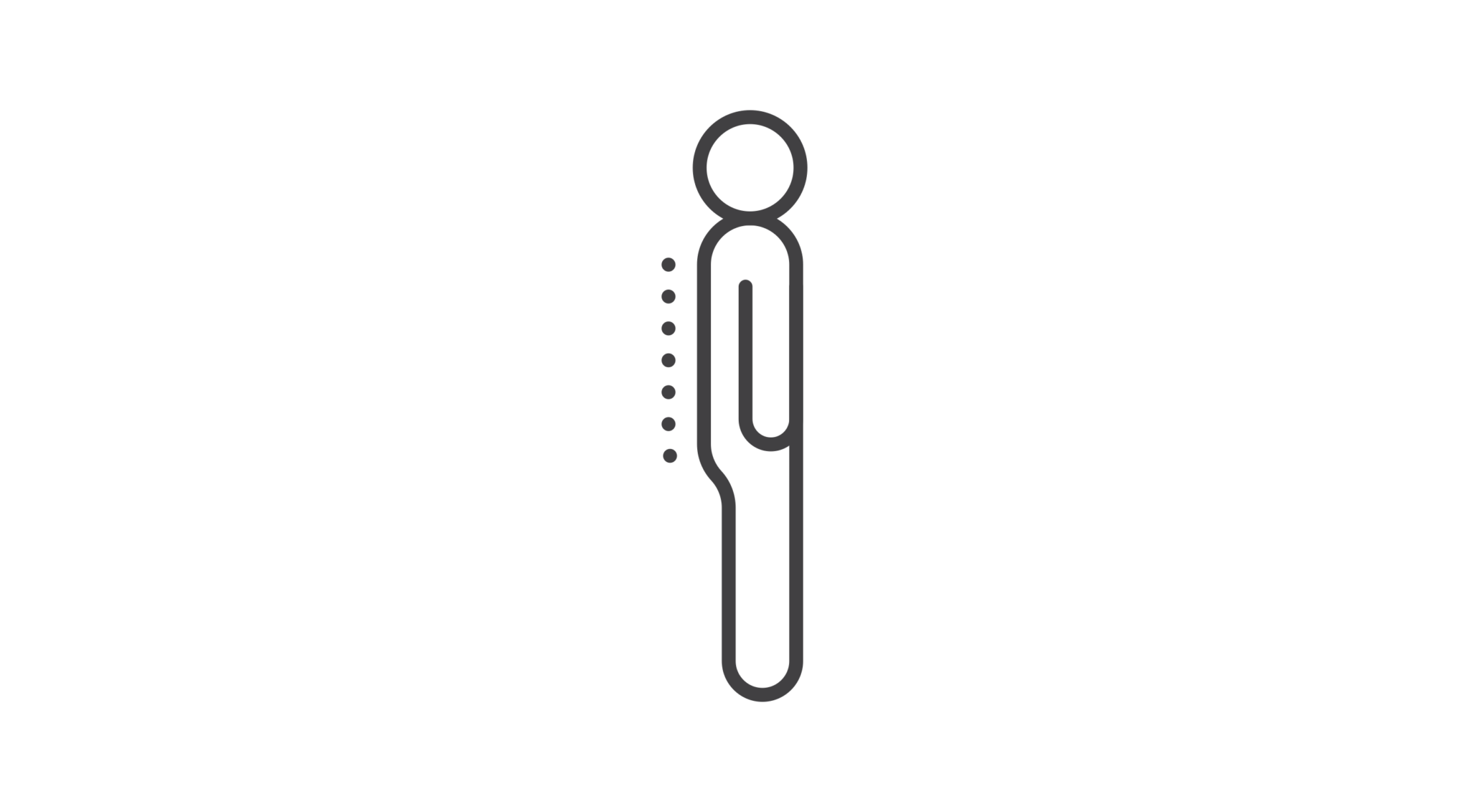
重心バランスを考慮した
密度・張力設計
.072-1024x566.jpeg)
“広げる・伸ばす”動きを引き出す
テンション配置
.063-scaled.jpeg)
開帳・扁平傾向に配慮した
縦横方向テンション

母趾〜小趾が整列しやすい
張力バランス
※ いずれも医療的効果を示すものではなく、あくまで「足指が働きやすい状態をサポートする生活用品としての構造」の説明です。
● 製造のポイント
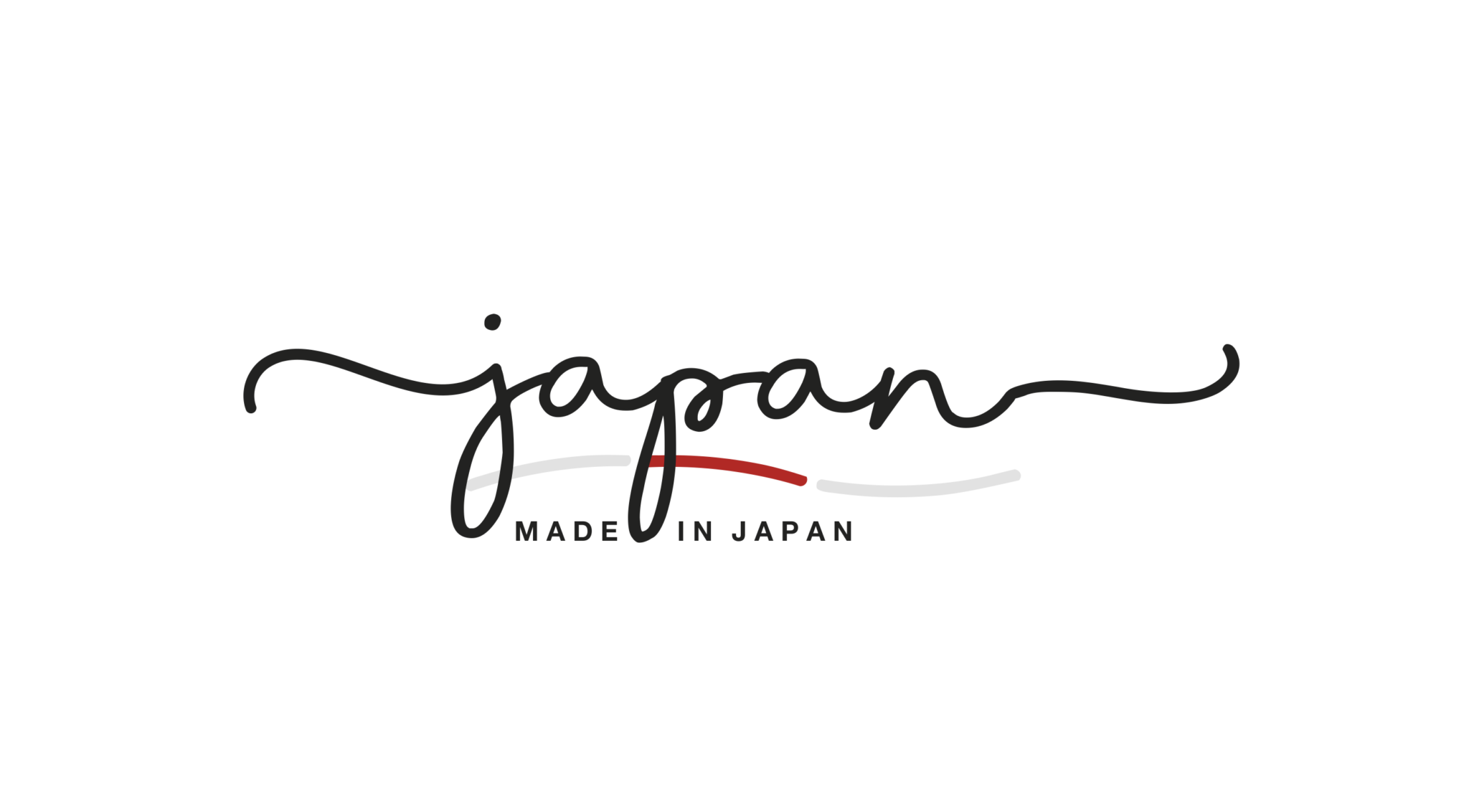
日本製
.067-1024x566.jpeg)
高密度
.068-1024x566.jpeg)
極薄
.065-1024x566.jpeg)
高耐久
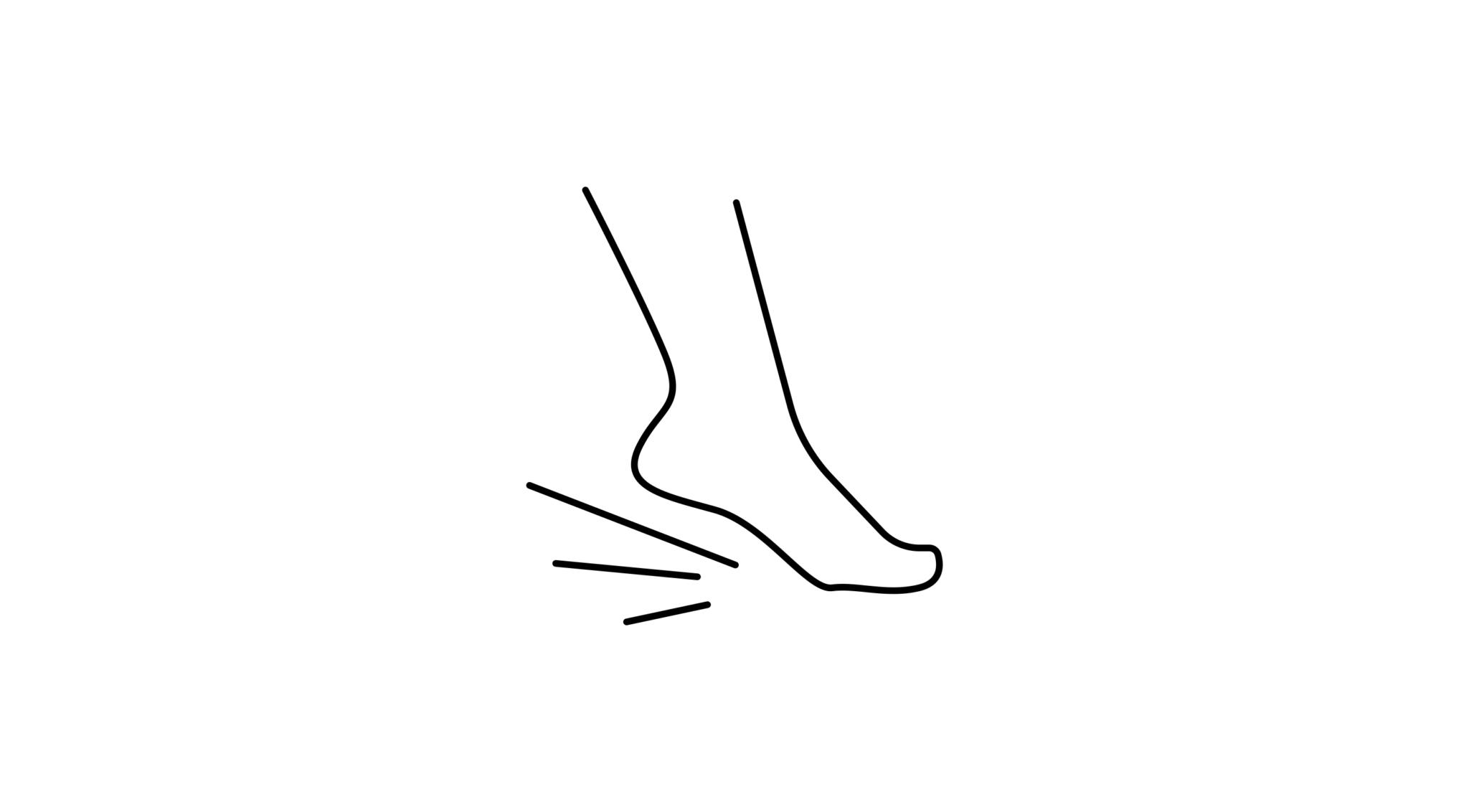
高グリップ
.064-1024x566.jpeg)
吸湿・速乾
- 日本製:専門工場が ±1mm 単位でテンション管理
- 高密度:700nmクラスの極細繊維
- 極薄:約2mmの軽さと安定性
- 高耐久:生活用品としての強度
- 扇形フォルム:足指が自然に広がりやすい形状
